Private Pilot Book Exam 3 - Aircraft Performance
1/72
There's no tags or description
Looks like no tags are added yet.
Name | Mastery | Learn | Test | Matching | Spaced |
|---|
No study sessions yet.
73 Terms
When taking off or landing at an airport where heavy aircraft are operating, one should be particularly alert to the hazards of wingtip vortices because this turbulence tends to
sink into the flightpath of aircraft operating below the aircraft generating the turbulence
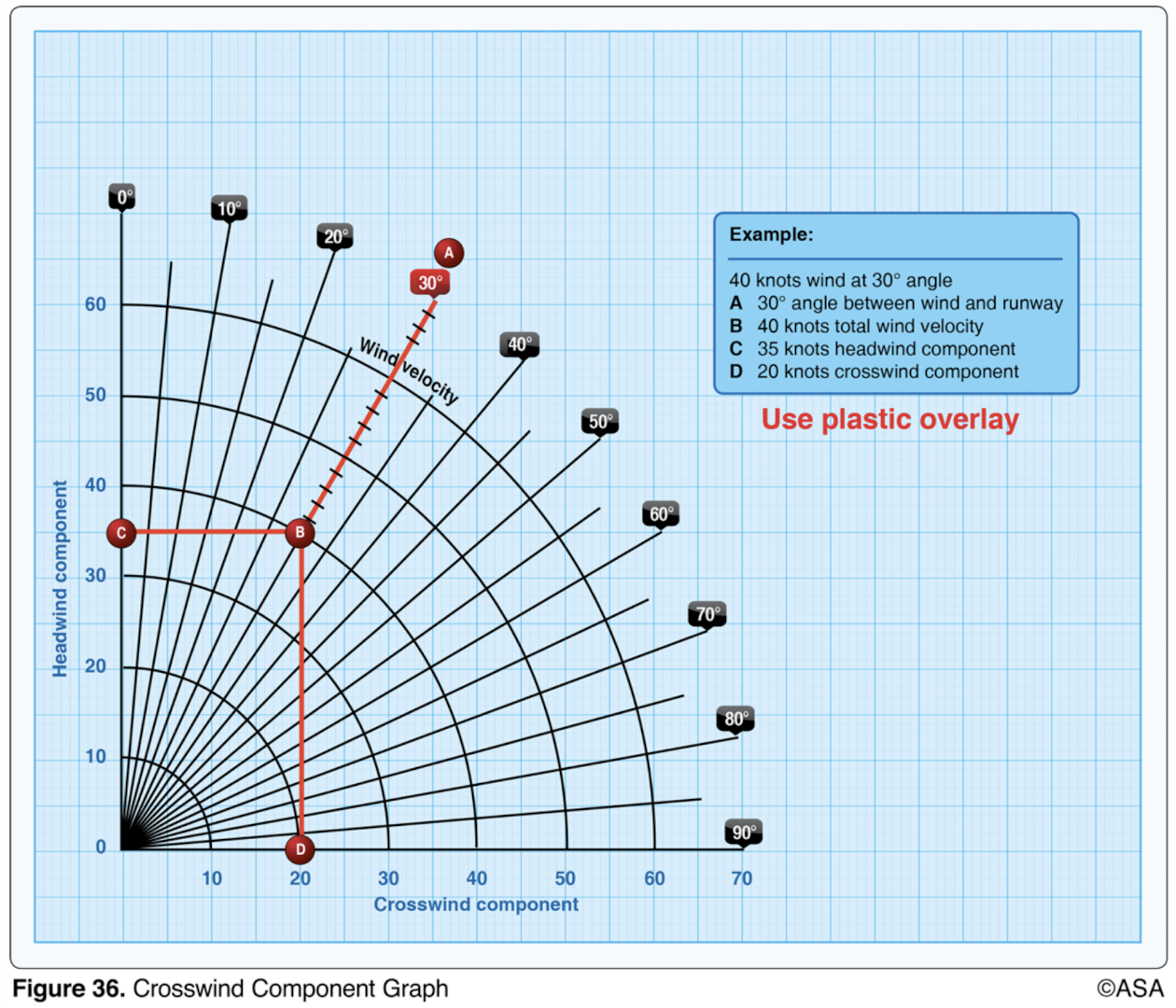
(Refer to Figure 36.) With a reported wind of north at 20 knots, which runway (6, 29, or 32) is acceptable for use for an airplane with a 13-knot maximum crosswind component?
Runway 32
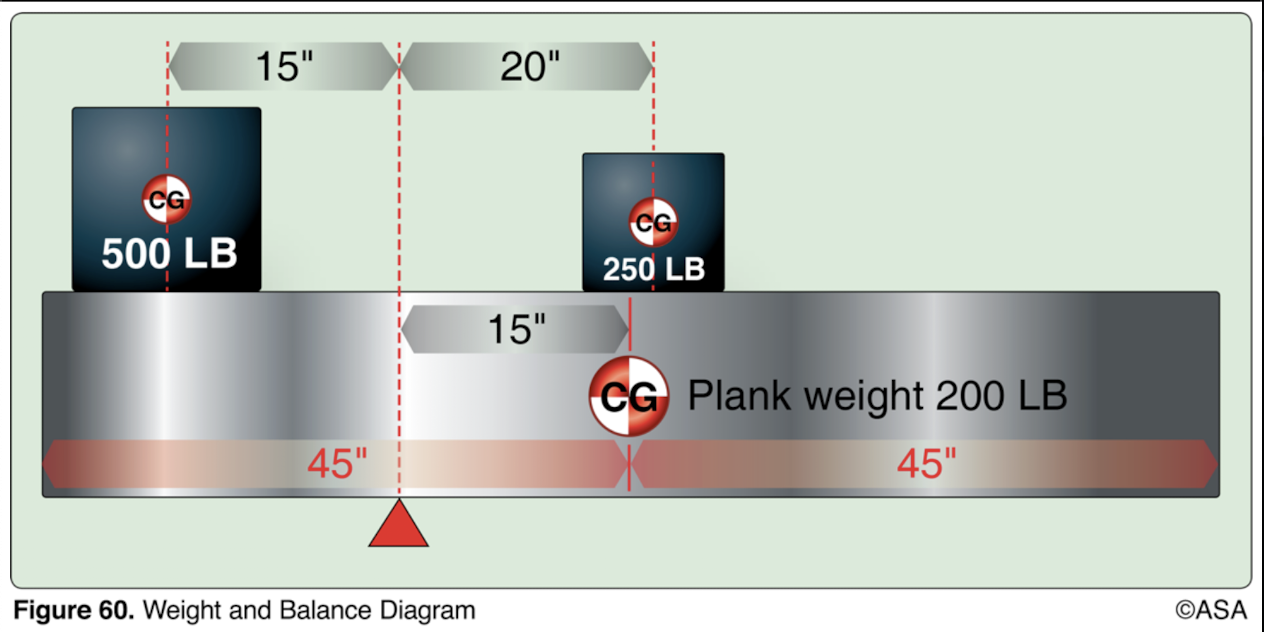
(Refer to Figure 60.) How should the 500-pound weight be shifted to balance the plank on the fulcrum?
1 inch to the left
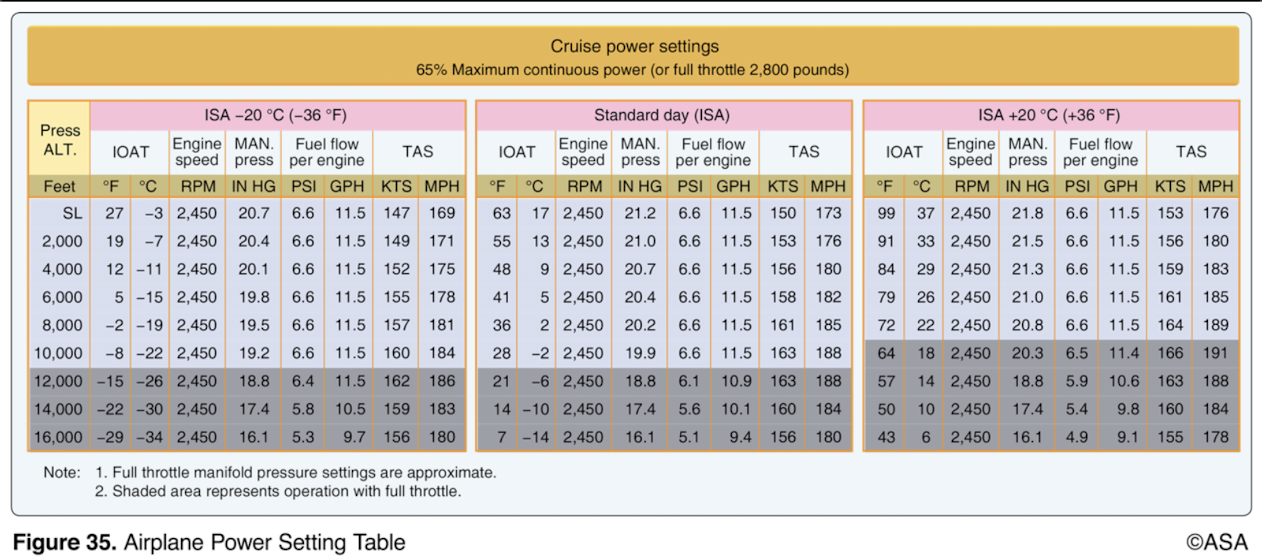
(Refer to Figure 35.) What is the expected fuel consumption for a 1,000-nautical mile flight under the following conditions?
Pressure altitude 8,000 ft
Temperature 22°C
Manifold pressure 20.8 "Hg
Wind Calm
70.1 gallons
If an aircraft is loaded 90 pounds over maximum certificated gross weight and fuel (gasoline) is drained to bring the aircraft weight within limits, how much fuel should be drained?
15 gallons
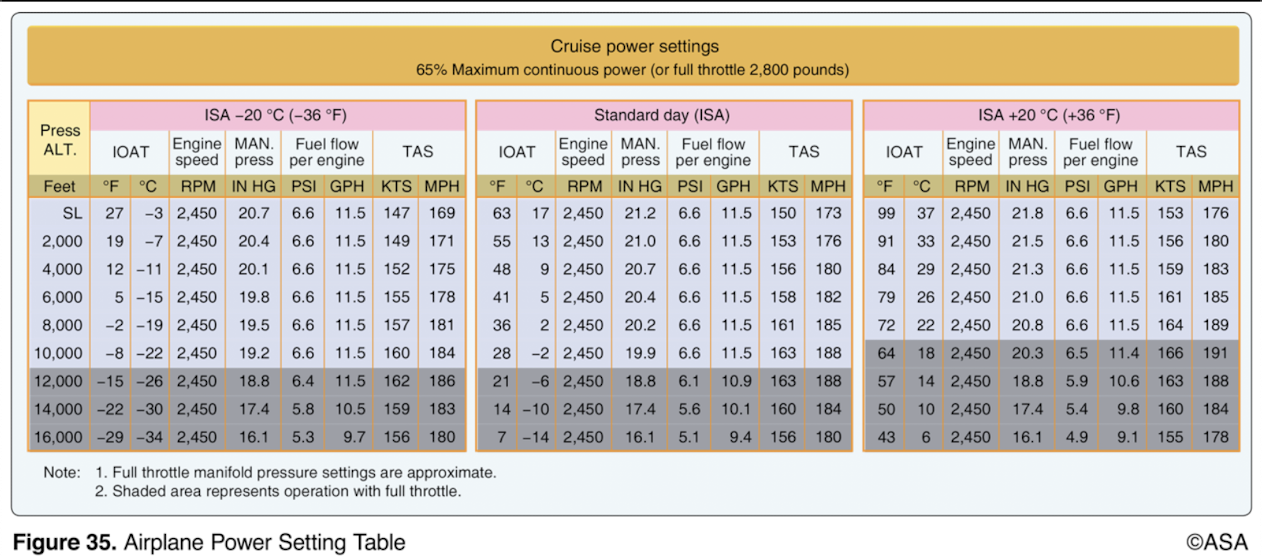
(Refer to Figure 35.) Approximately what true airspeed should a pilot expect with full throttle at 10,500 feet with a temperature of 36 degrees F above standard?
165 knots
What effect, if any, does high humidity have on aircraft performance?
It decreases performance
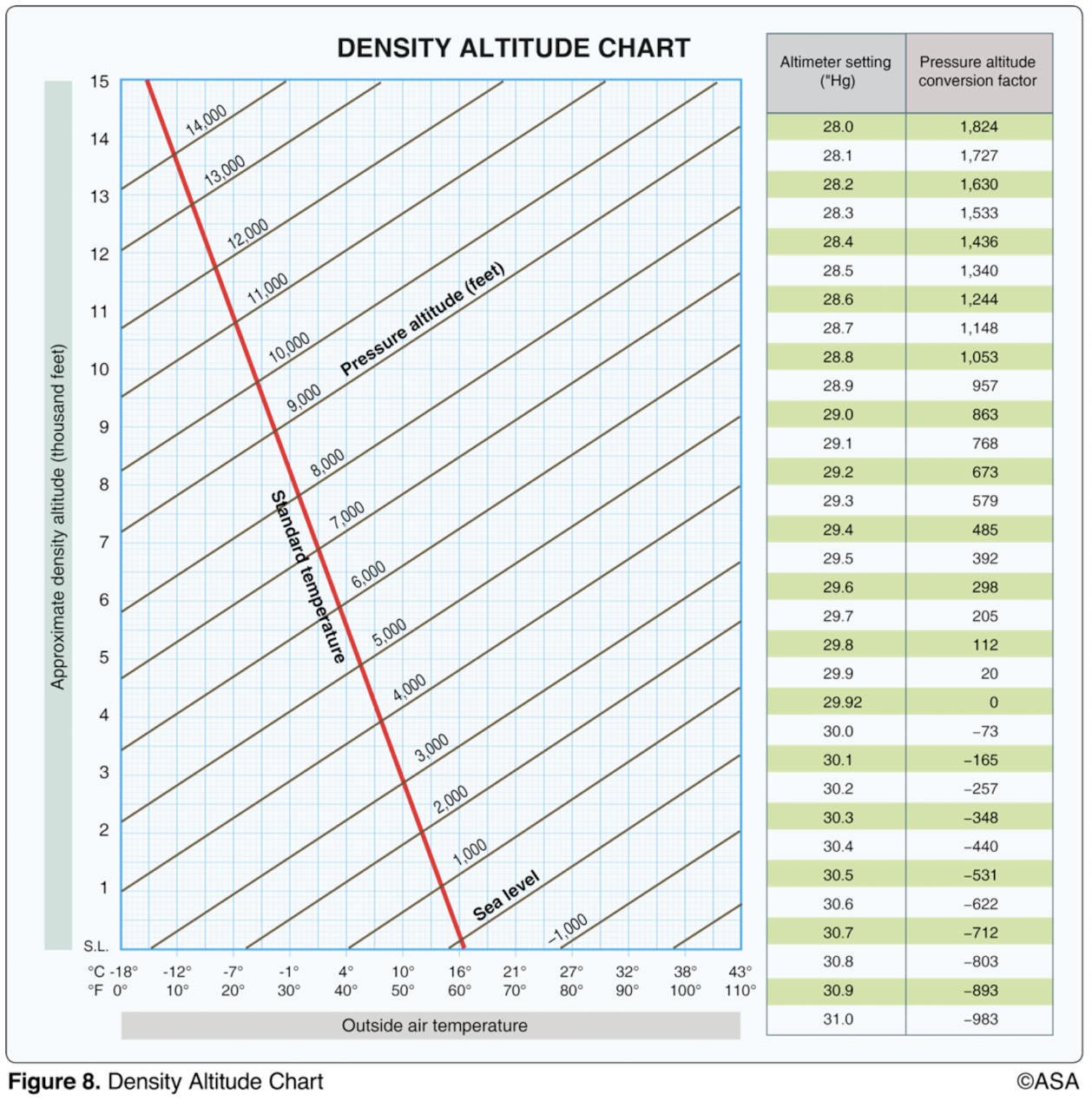
(Refer to Figure 8.) Determine the density altitude for these conditions:
Altimeter setting 29.25
Runway temperature + 81°F
Airport elevation 5,250 ft MSL
8,500 feet MSL
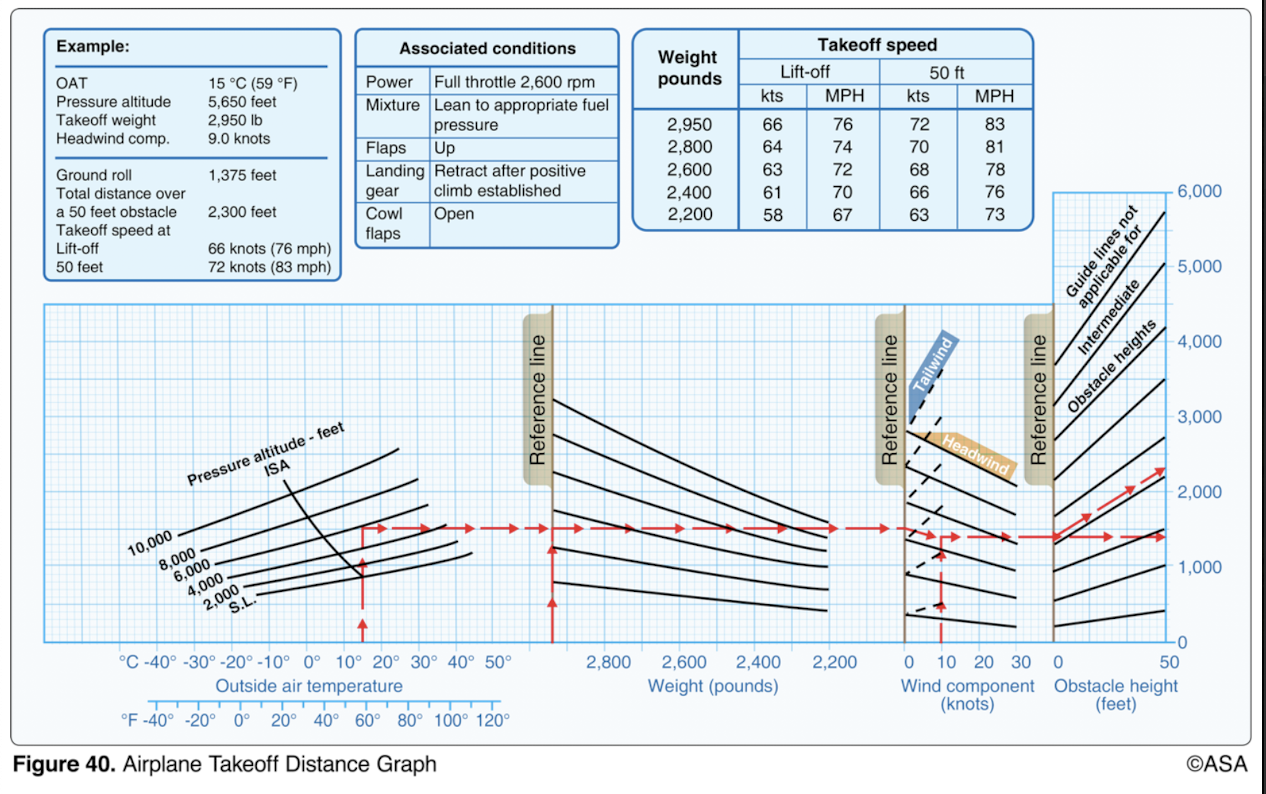
(Refer to Figure 40.) Determine the approximate ground roll distance required for takeoff.
OAT 95°F
Pressure altitude 2,000 ft
Takeoff weight 2,500 lb
Headwind component 20 kts
650 feet
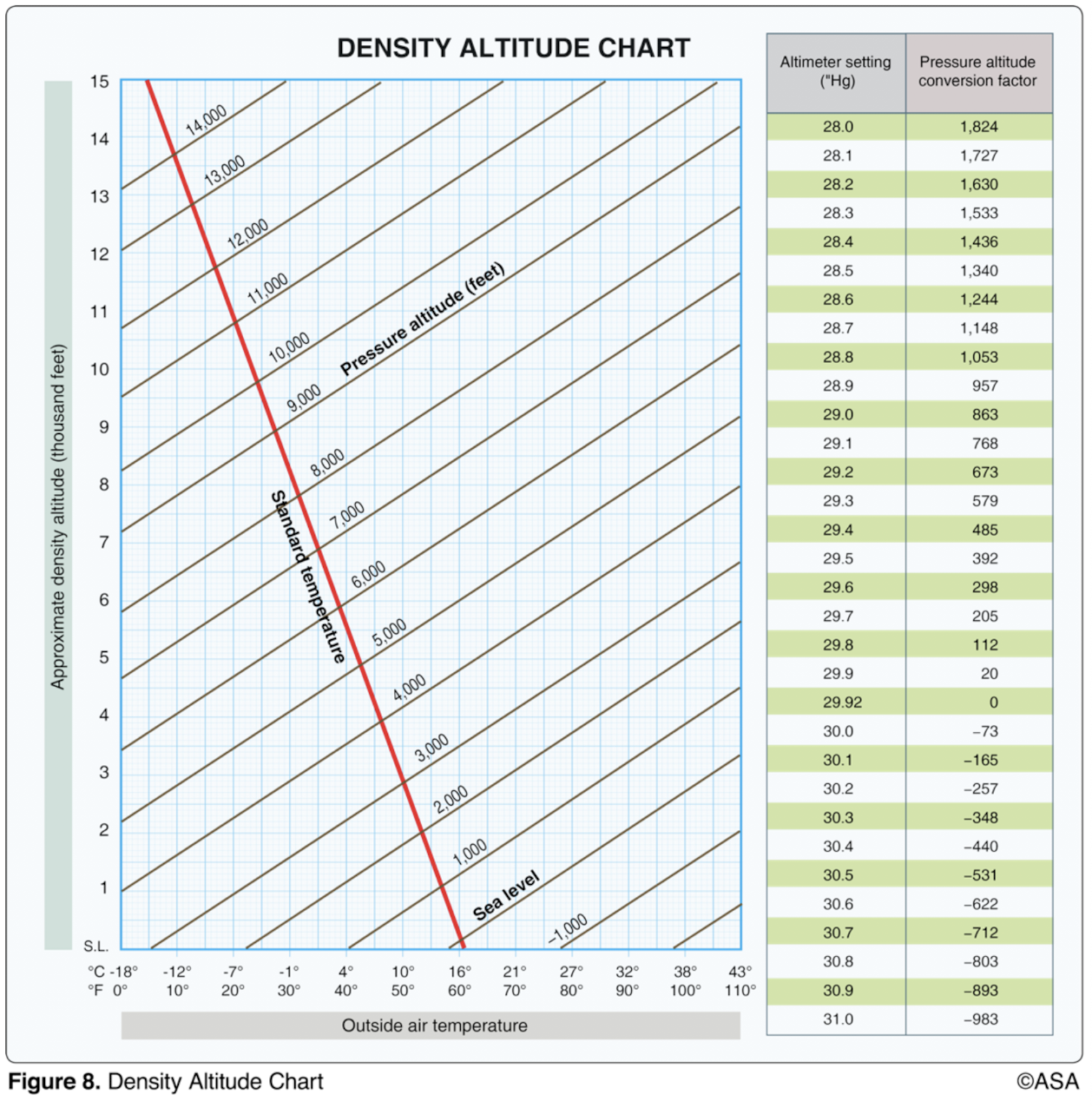
(Refer to Figure 8.) Determine the pressure altitude at an airport that is 1,386 feet MSL with an altimeter setting of 29.97.
1,341 feet MSL
Which items are included in the empty weight of an aircraft?
Unusable fuel and undrainable oil
(Refer to Figures 32 and 33.) Which action can adjust the airplane's weight to maximum gross weight and the CG within limits for takeoff?
Front seat occupants 425 lb
Rear seat occupants 300 lb
Fuel, main tanks 44 gal
Drain 9 gallons of fuel
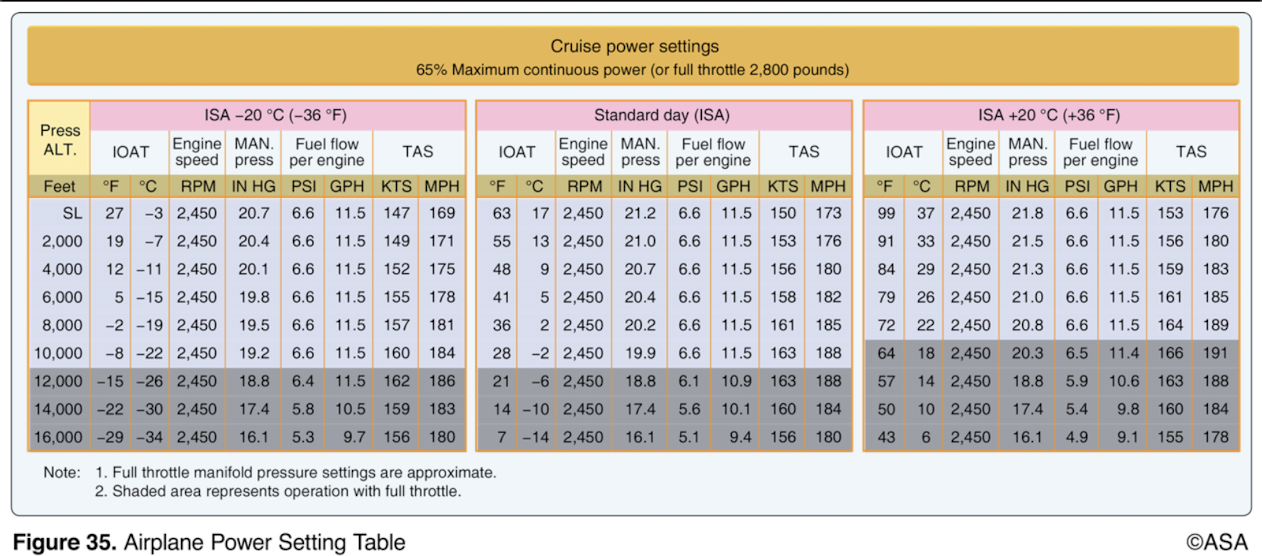
(Refer to Figure 35.) Determine the approximate manifold pressure setting with 2,450 RPM to achieve 65 percent maximum continuous power at 6,500 feet with a temperature of 36°F higher than standard.
21.0 “Hg
What effect does high density altitude, as compared to low density altitude, have on propeller efficiency and why?
Efficiency is reduced because the propeller exerts less force at high density altitudes than at low density altitudes.
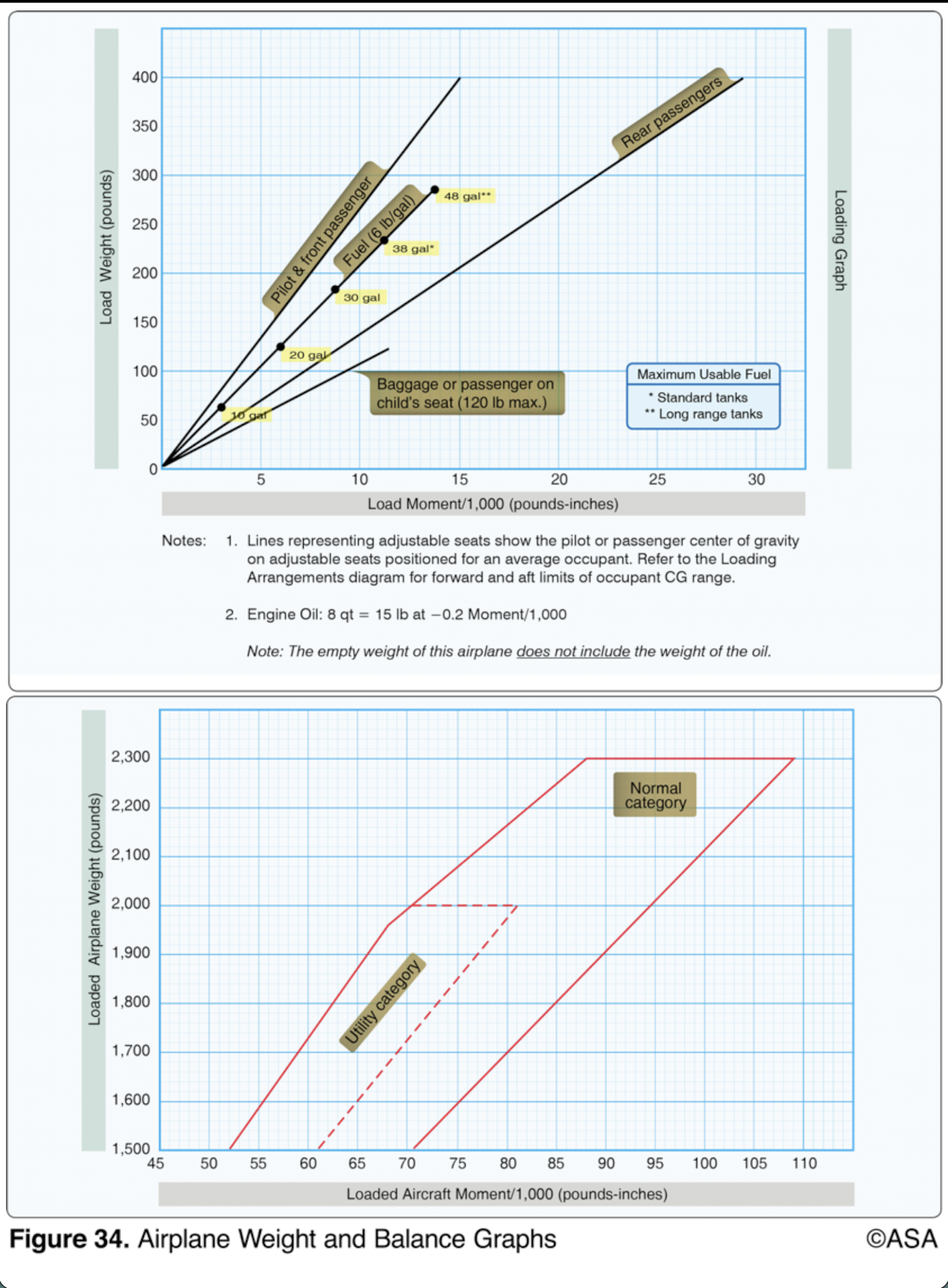
(Refer to Figure 34.) What is the maximum amount of fuel that may be aboard the airplane on takeoff if loaded as follows?
WEIGHT (LB) MOM/1000
Empty weight 1,350 51.5
Pilot and front passenger 340 --
Rear passengers 310 --
Baggage 45 --
Oil, 8 qt -- --
40 gallons
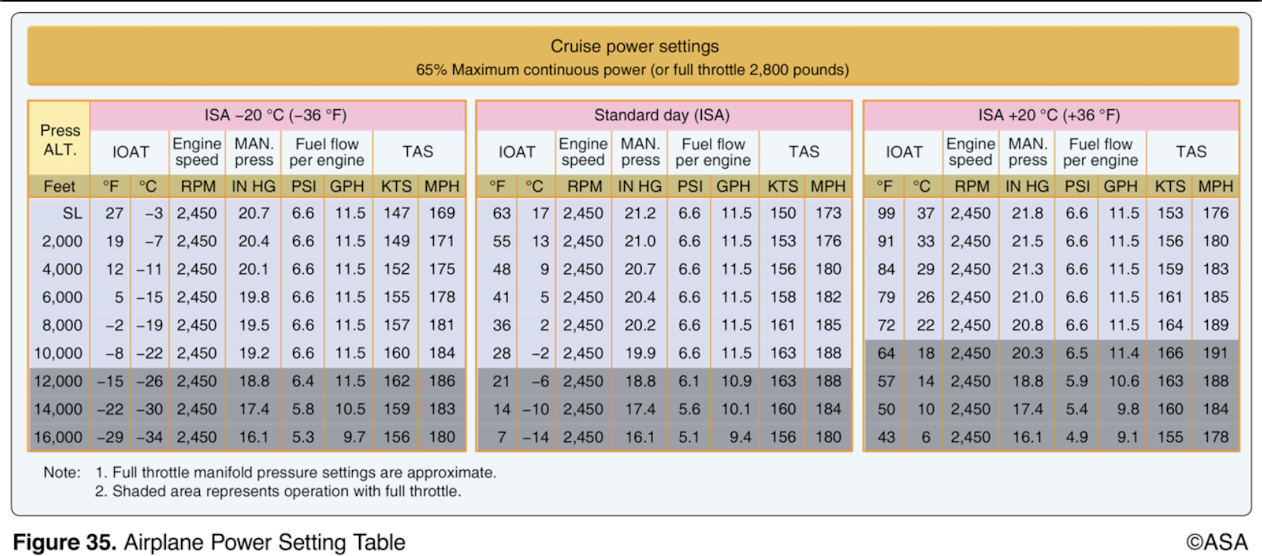
(Refer to Figure 35.) What fuel flow should a pilot expect at 11,000 feet on a standard day with 65 percent maximum continuous power?
11.2 gallons per hour

(Refer to Figure 38.) Determine the total distance required to land over a 50-foot obstacle.
Pressure altitude 3,750 ft
Headwind 12 kts
Temperature Std
816 feet

(Refer to Figure 38.) Determine the approximate landing ground roll distance.
Pressure altitude 5,000 ft
Headwind Calm
Temperature 101°F
545 feet
(Refer to Figures 32 and 33.) Determine if the airplane weight and balance is within limits.
Front seat occupants 340 lb
Rear seat occupants 295 lb
Fuel (main wing tanks) 44 gal
Baggage 56 lb
20 pounds overweight, CG within limits
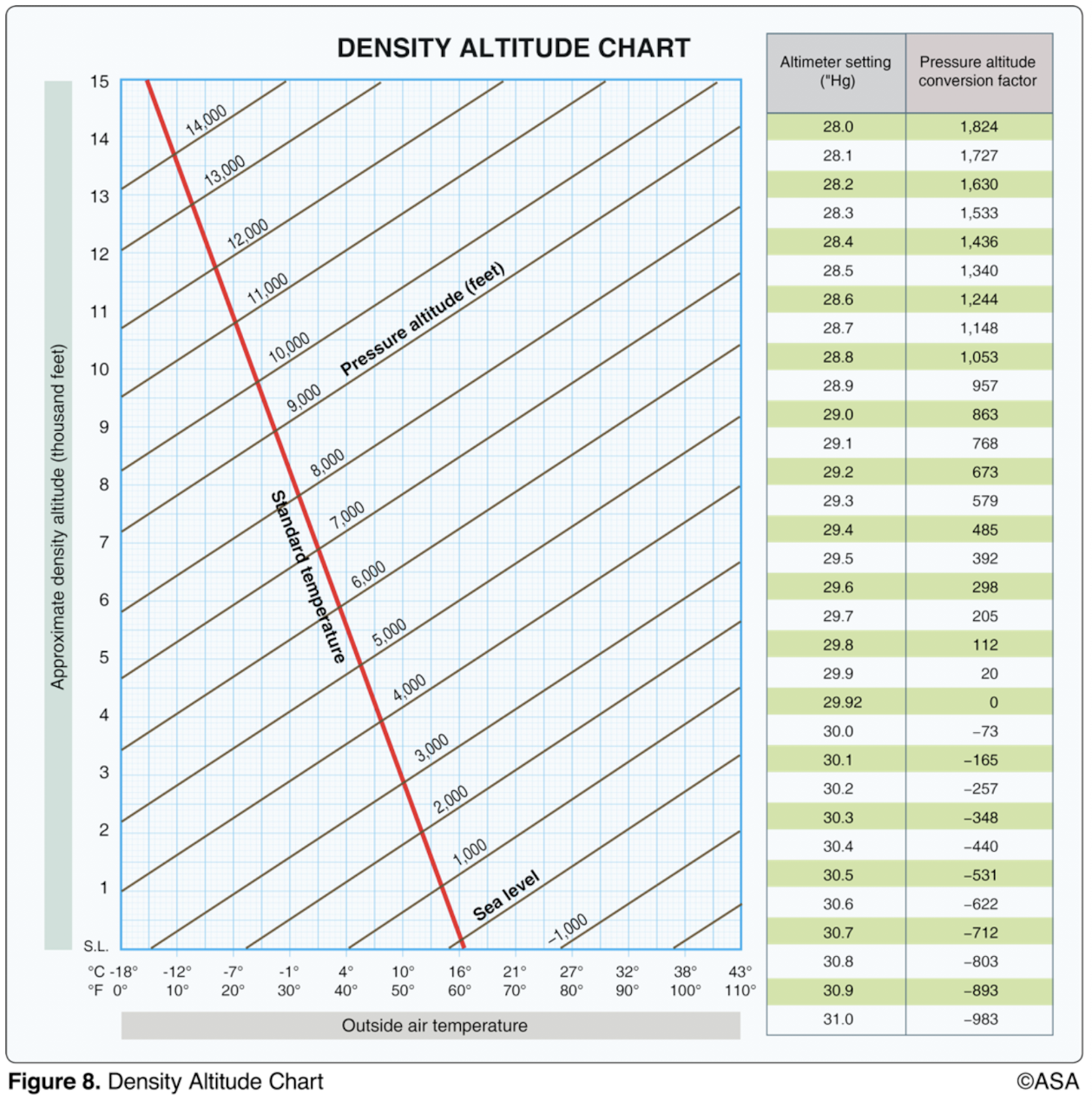
1,700-foot decrease
(Refer to Figure 8.) What is the effect of a temperature decrease and a pressure altitude increase on the density altitude from 90°F and 1,250 feet pressure altitude to 55°F and 1,750 feet pressure altitude?
When departing behind a heavy aircraft, the pilot should avoid wake turbulence by maneuvering the aircraft
above and upwind from the heavy aircraft
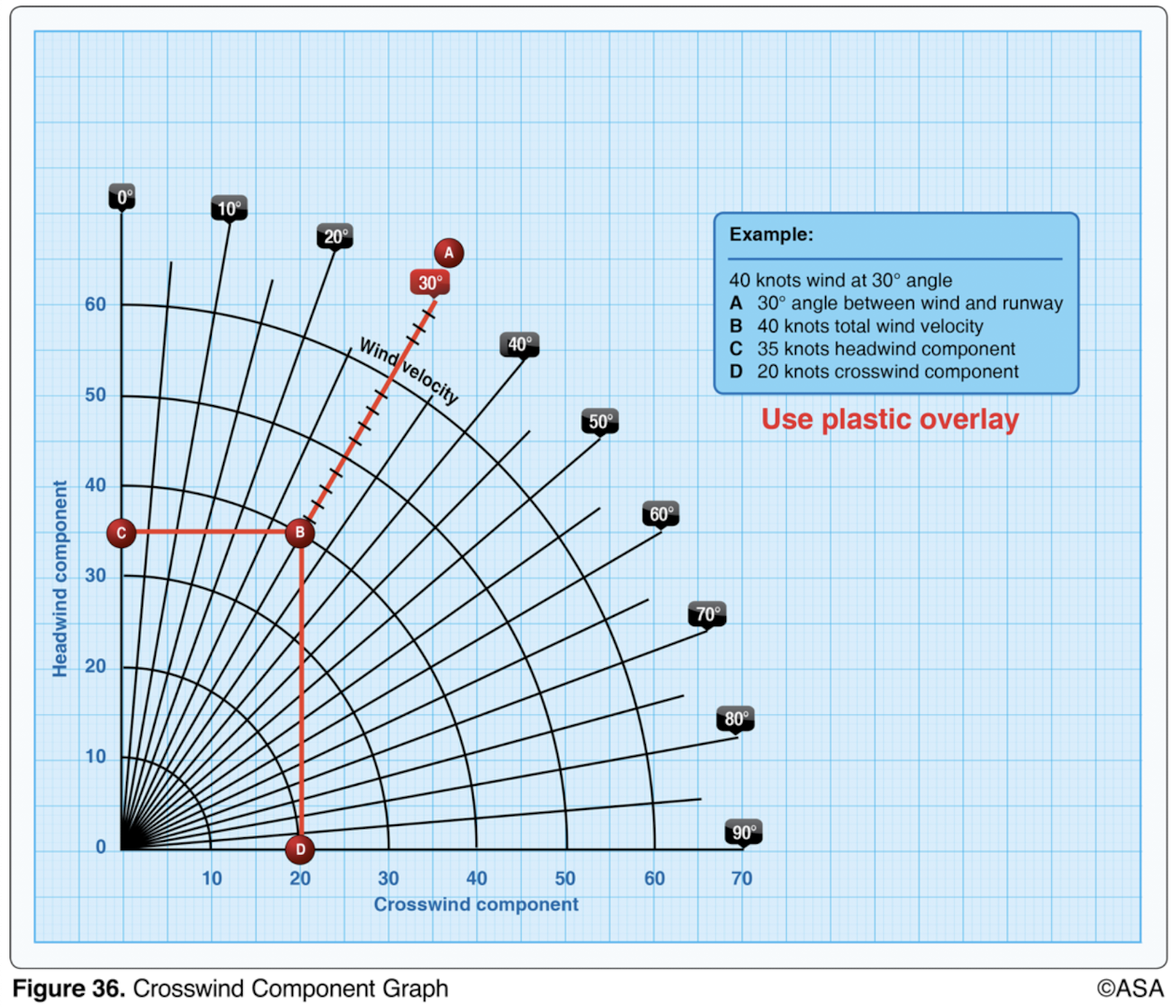
(Refer to Figure 36.) What is the crosswind component for a landing on Runway 18 if the tower reports the wind as 220° at 30 knots?
19 knots
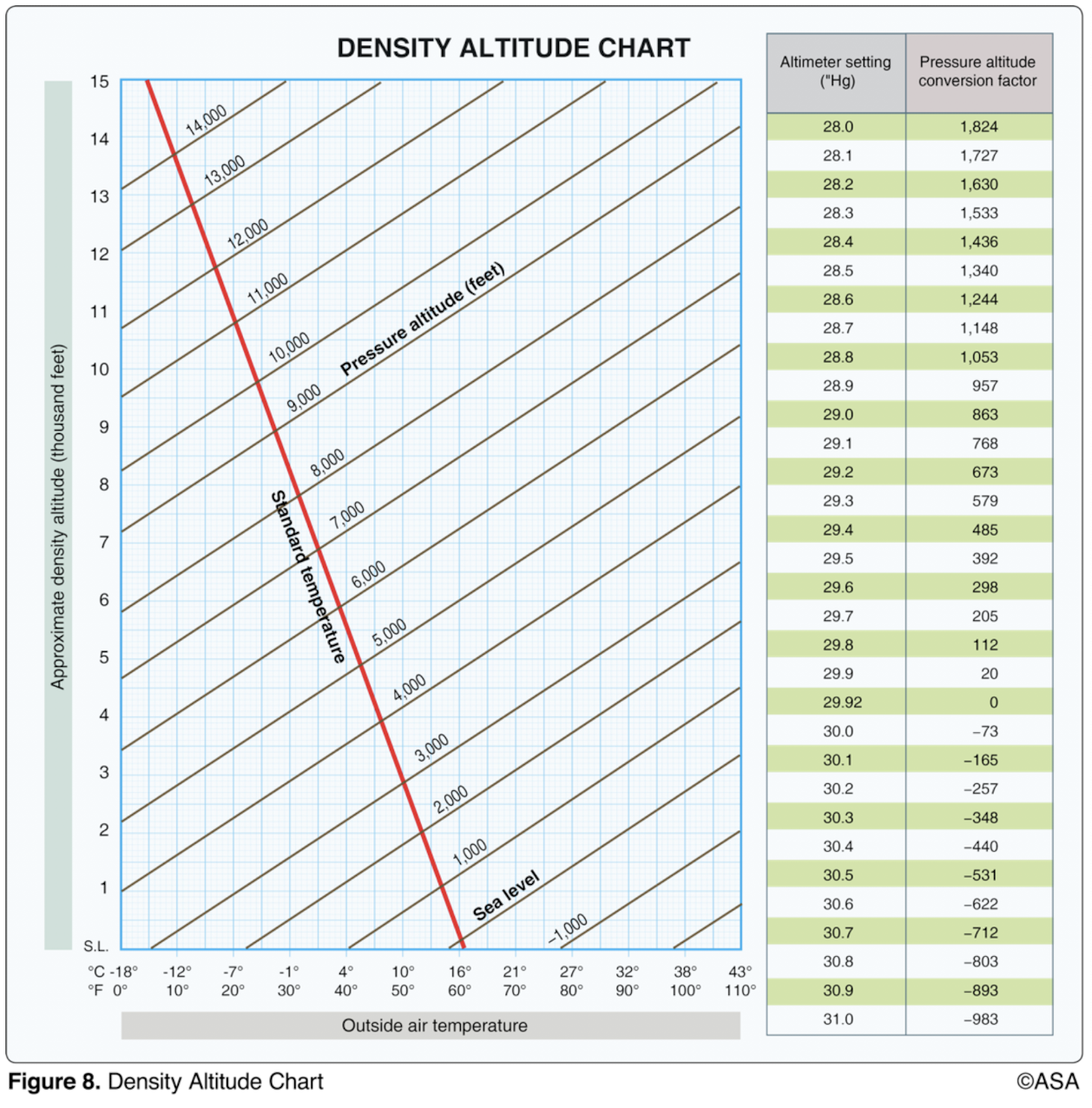
(Refer to Figure 8.) Determine the pressure altitude with an indicated altitude of 1,380 feet MSL with an altimeter setting of 28.22 at standard temperature.
2,991 feet MSL
When landing behind a large aircraft, which procedure should be followed for vortex avoidance?
Stay above its final approach flightpath all the way to touchdown
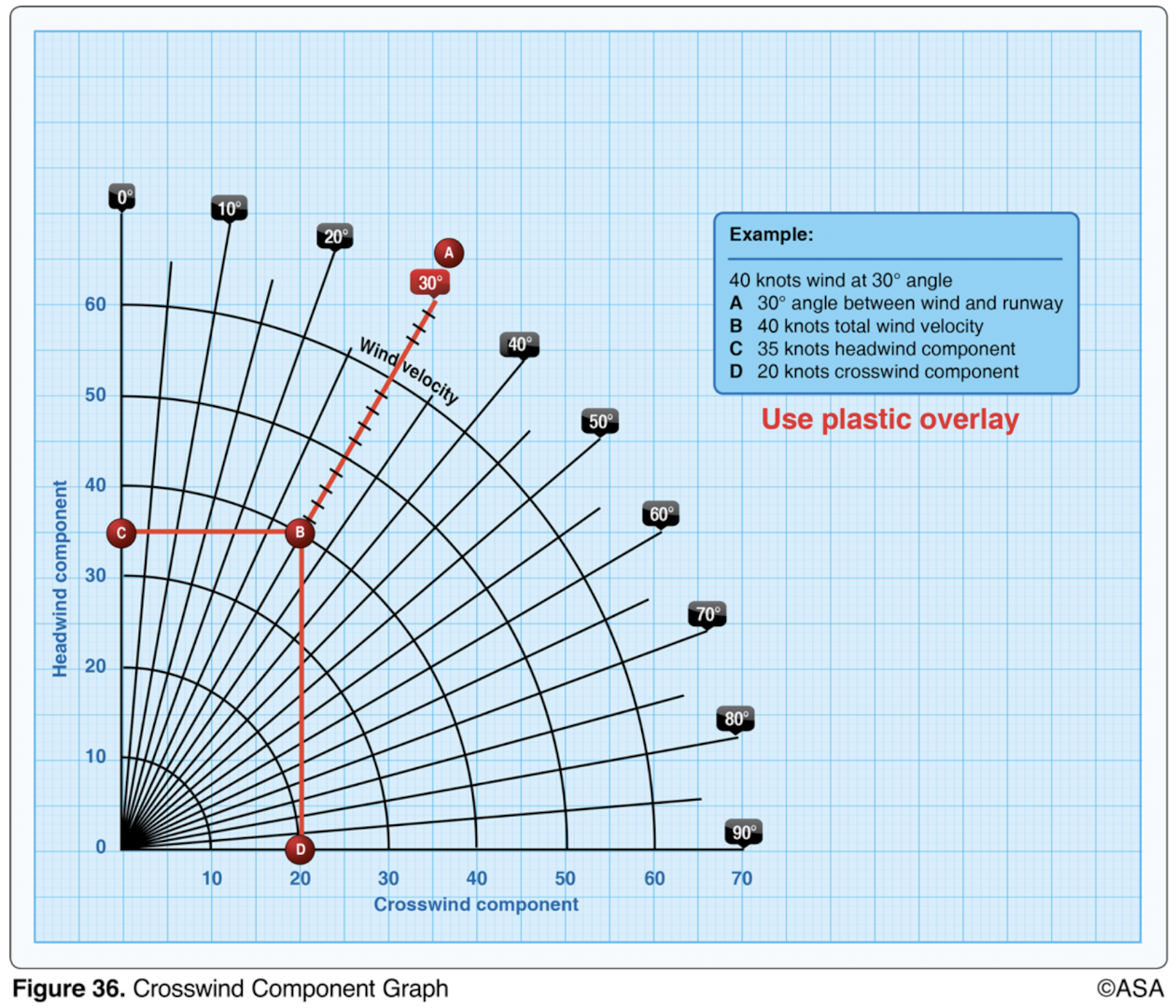
(Refer to Figure 36.) With a reported wind of south at 20 knots, which runway (10, 14, or 24) is appropriate for an airplane with a 13-knot maximum crosswind component?
Runway 14
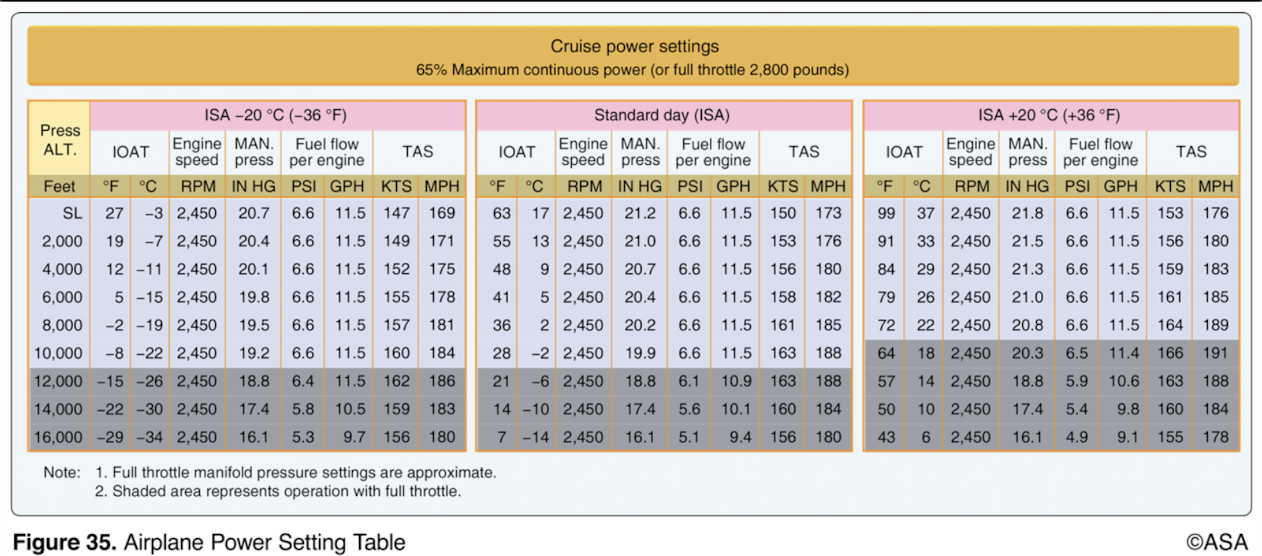
(Refer to Figure 35.) What is the expected fuel consumption for a 500-nautical mile flight under the following conditions?
Pressure altitude 4,000 ft
Temperature + 29°C
Manifold pressure 21.3 "Hg
Wind Calm
36.1 gallons

The CG is located how far aft of datum?
CG 94.01
What must a pilot be aware of as a result of ground effect?
Included drag decreases; therefore, any excess speed at the point of flare may cause considerable floating
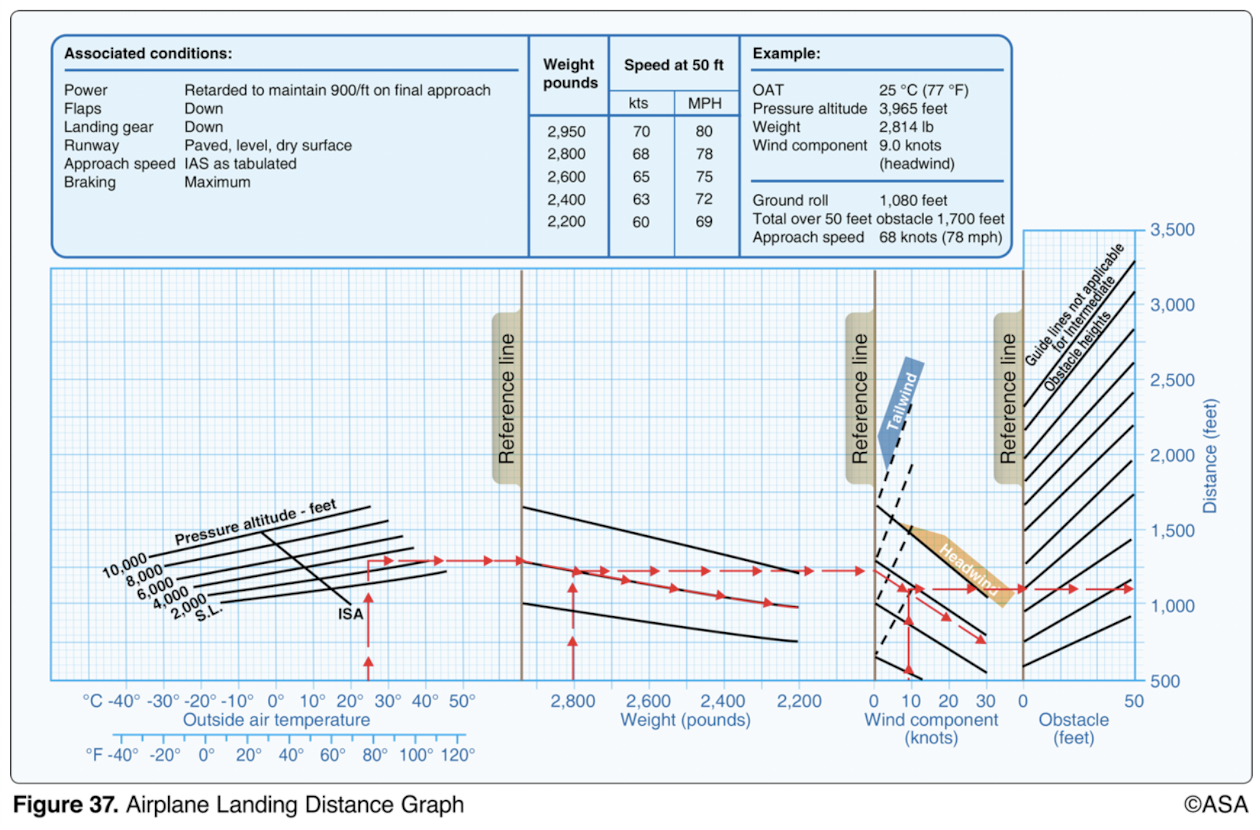
(Refer to Figure 37.) Determine the total distance required to land.
OAT Std
Pressure altitude 10,000 ft
Weight 2,400 lb
Wind component Calm
Obstacle 50 ft
1,925 feet
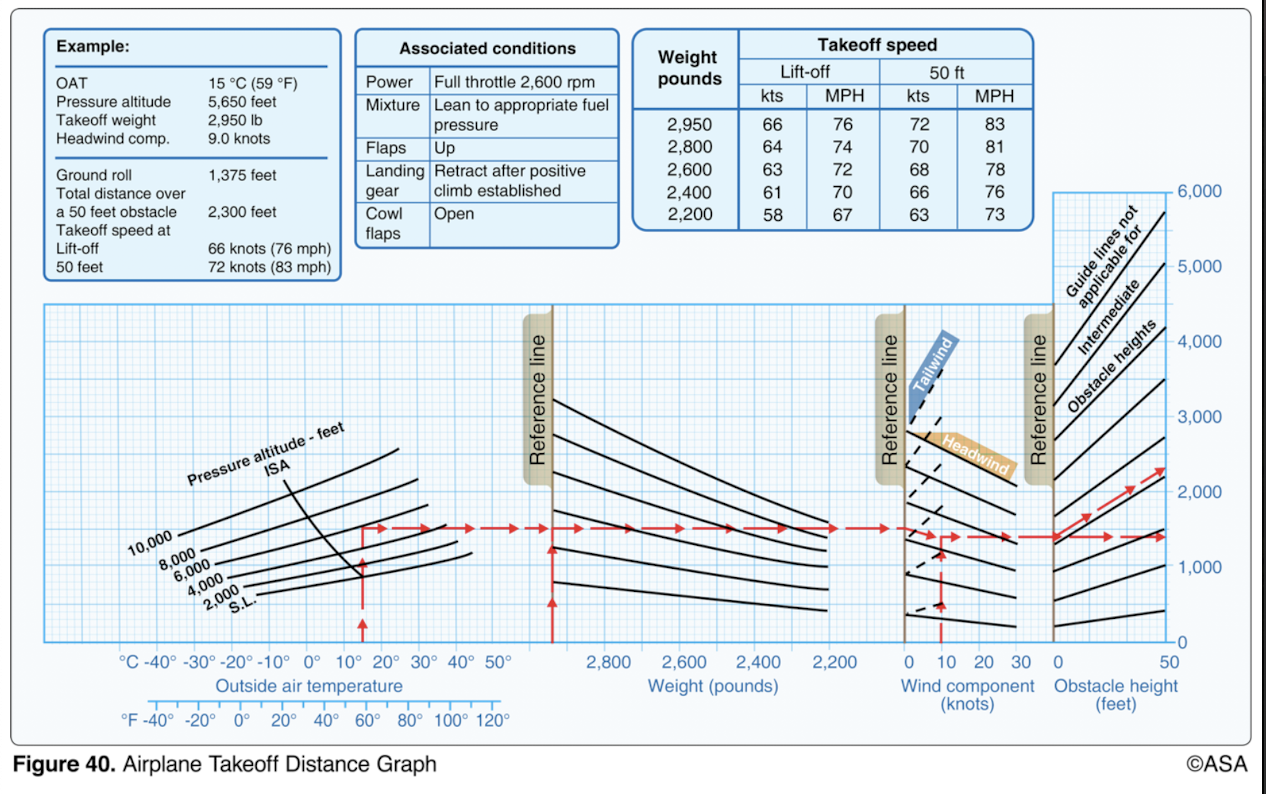
(Refer to Figure 40.) Determine the approximate ground roll distance required for takeoff.
OAT 100°F
Pressure altitude 2,000 ft
Takeoff weight 2,750 lb
Headwind component Calm
1,150 feet
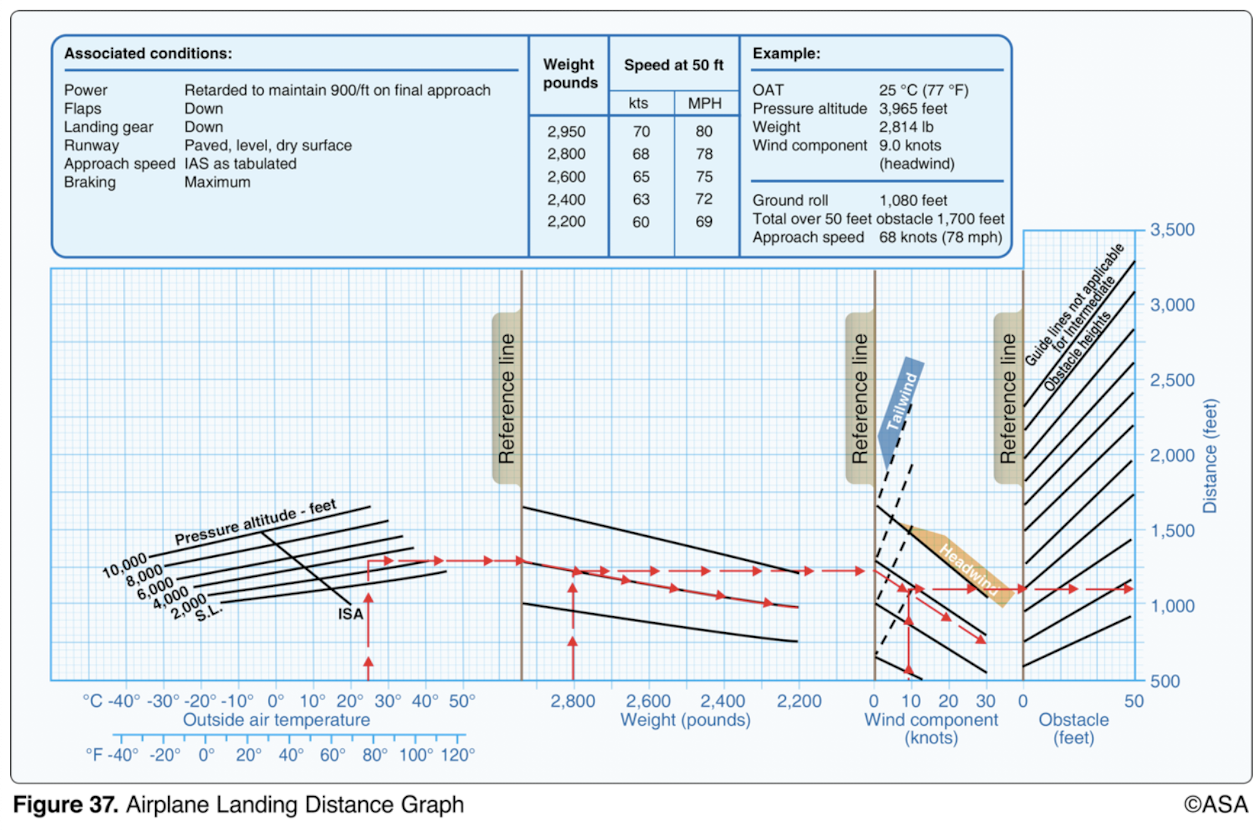
(Refer to Figure 37.) Determine the total distance required to land.
OAT = 90°F
Pressure altitude = 3,000 ft
Weight = 2,900 lb
Headwind component = 10 kts
Obstacle = 50 ft
1,725 feet
Which combination of atmospheric conditions will reduce aircraft takeoff and climb performance?
High temperature, high relative humidity, and high density altitude
An aircraft is loaded 110 pounds over maximum certificated gross weight. If fuel (gasoline) is drained to bring the aircraft weight within limits, how much fuel should be drained?
18.4 gallons
(Refer to Figures 32 and 33.) Calculate the weight and balance and determine if the CG and the weight of the airplane are within limits.
Front seat occupants 350 lb
Rear seat occupants 325 lb
Baggage 27 lb
Fuel 35 gal
CG 83.4, within limits
Ground effect is most likely to result in which problem?
Becoming airborne before reaching recommended takeoff speed
(Refer to Figures 32 and 33.) What is the maximum amount of baggage that can be carried when the airplane is loaded as follows?
Front seat occupants 387 lb
Rear seat occupants 293 lb
Fuel 35 gal
45 pounds

(Refer to Figure 38.) Determine the approximate landing ground roll distance.
Pressure altitude 1,250 ft
Headwind 8 kts
Temperature Std
366 feet
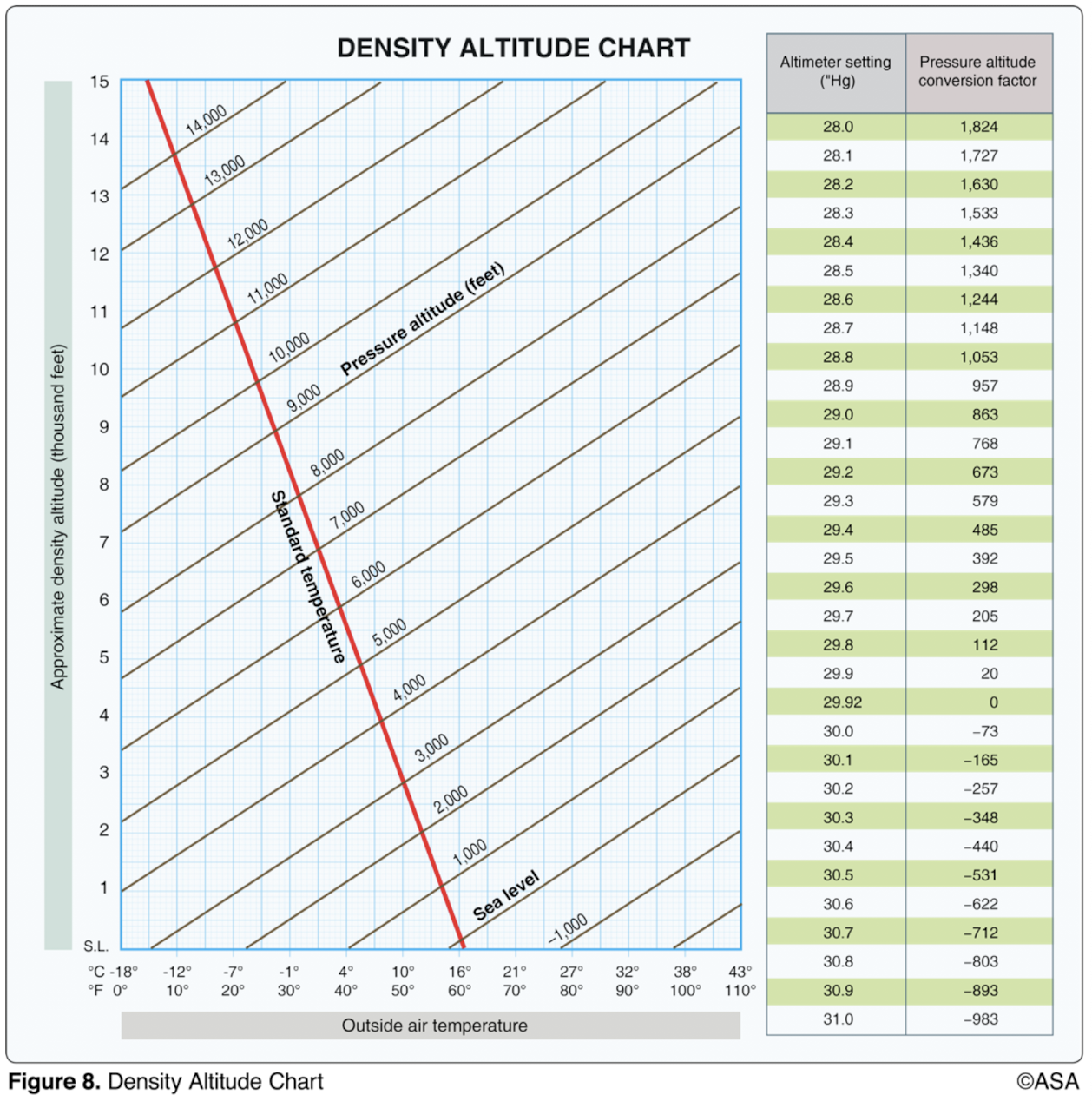
(Refer to Figure 8.) What is the effect of a temperature increase from 25 to 50°F on the density altitude if the pressure altitude remains at 5,000 feet?
1,650-foot increase

(Refer to Figure 38.) Determine the total distance required to land over a 50-foot obstacle.
Pressure altitude 5,000 ft
Headwind 8 kts
Temperature 41°F
Runway Hard surface
956 feet
Wingtip vortices created by large aircraft tend to
sink below the aircraft generating turbulence
How does the wake turbulence vortex circulate around each wingtip?
outward, upward, and around each tip
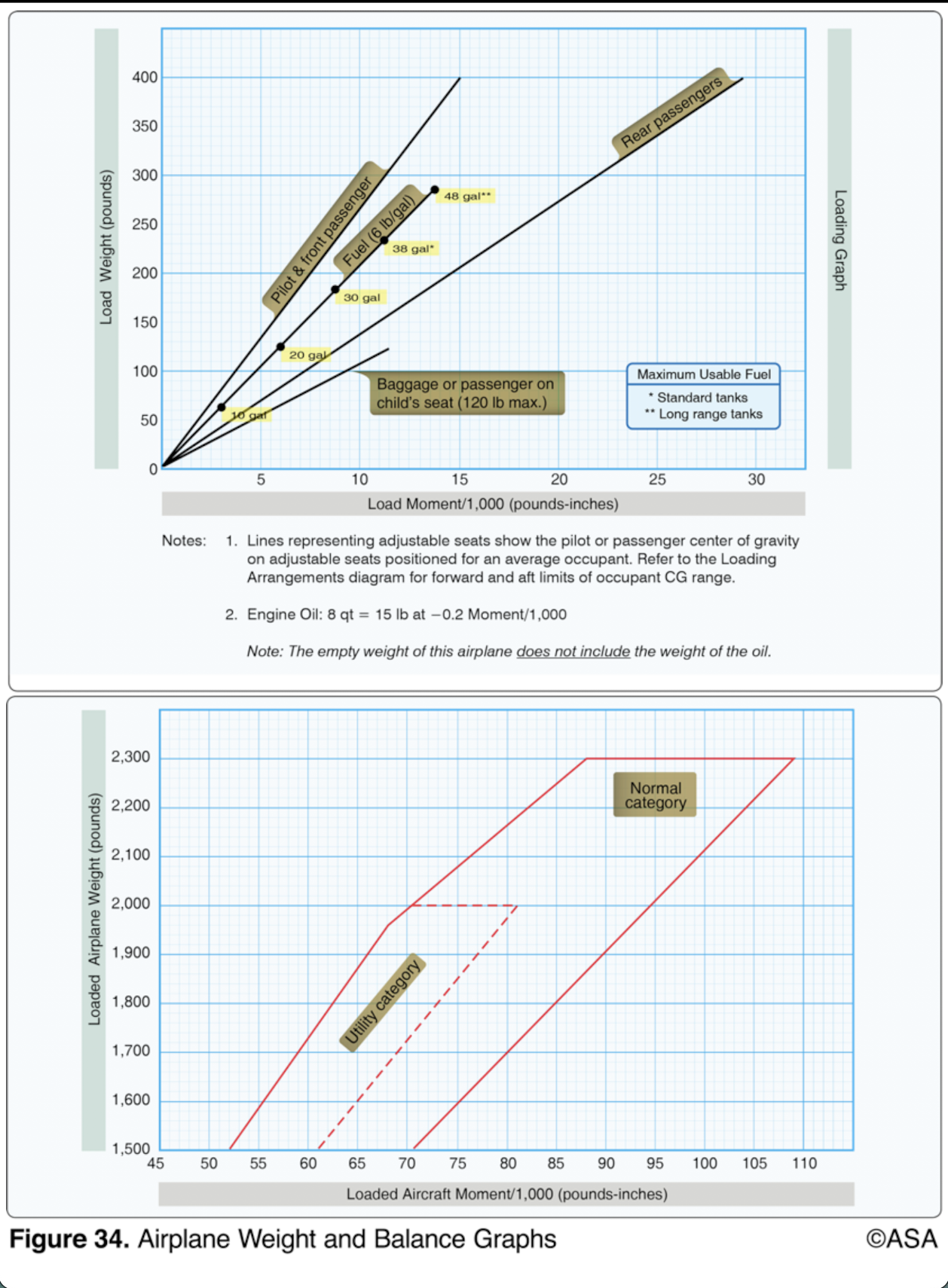
(Refer to Figure 34.) Determine the moment with the following data:
WEIGHT (LB) MOM/1000
Empty weight 1,350 51.5
Pilot and front passenger 340 --
Fuel (std tanks) Capacity --
Oil, 8 qt -- --
74.9 pound-inches
What is ground effect?
The result of the interference of the surface of the Earth with the airflow patterns about an airplane.
When landing behind a large aircraft, the pilot should avoid wake turbulence by staying
above the large aircraft’s final approach path and landing beyond the large aircraft’s touchdown point
The wind condition that requires maximum caution when avoiding wake turbulence on landing is a
light, quartering tailwind
The greatest vortex strength occurs when the generating aircraft is
heavy, clean, and slow
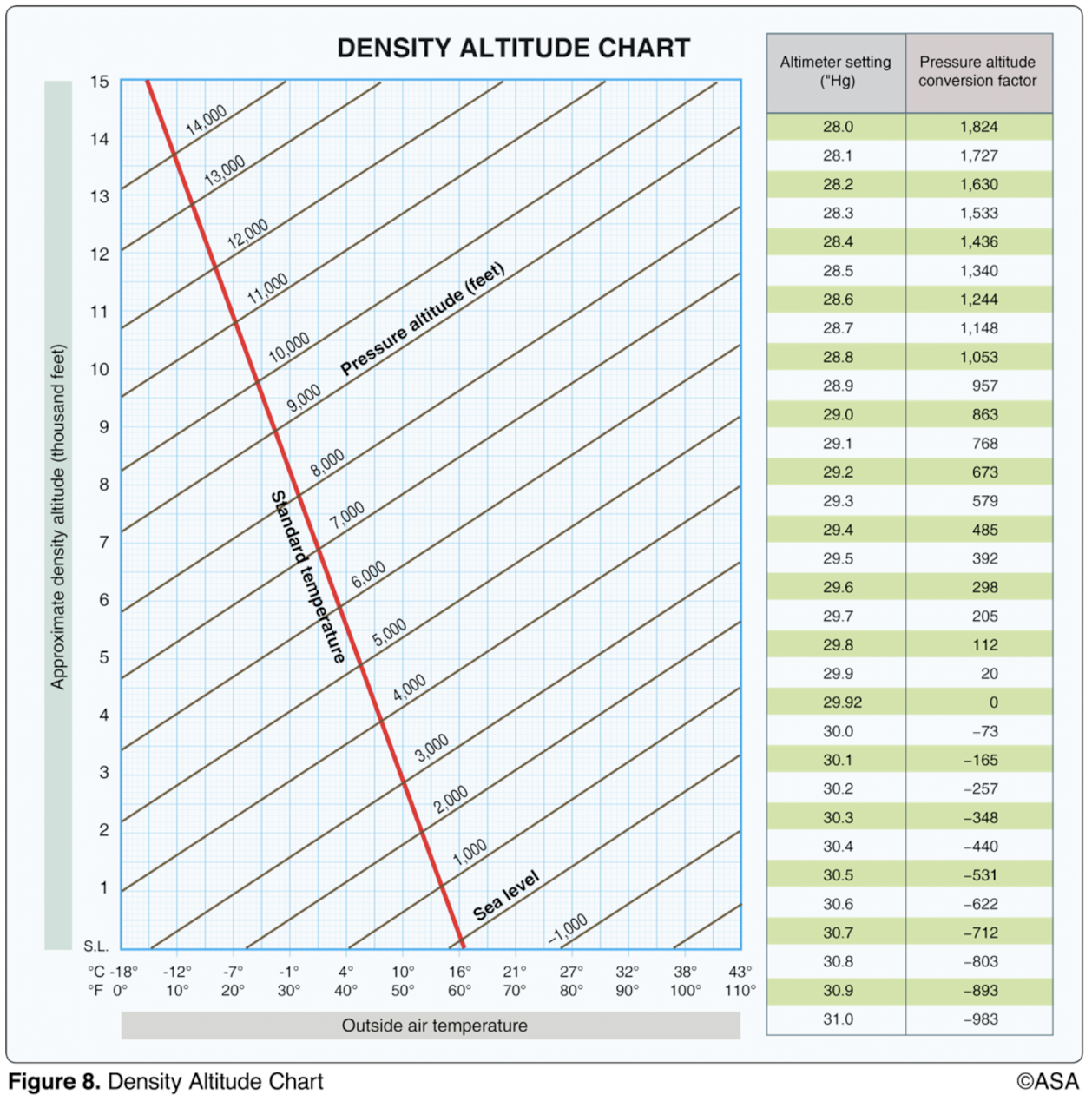
(Refer to Figure 8.) Determine the pressure altitude at an airport that is 3,563 feet MSL with an altimeter setting of 29.96.
3,527 feet MSL
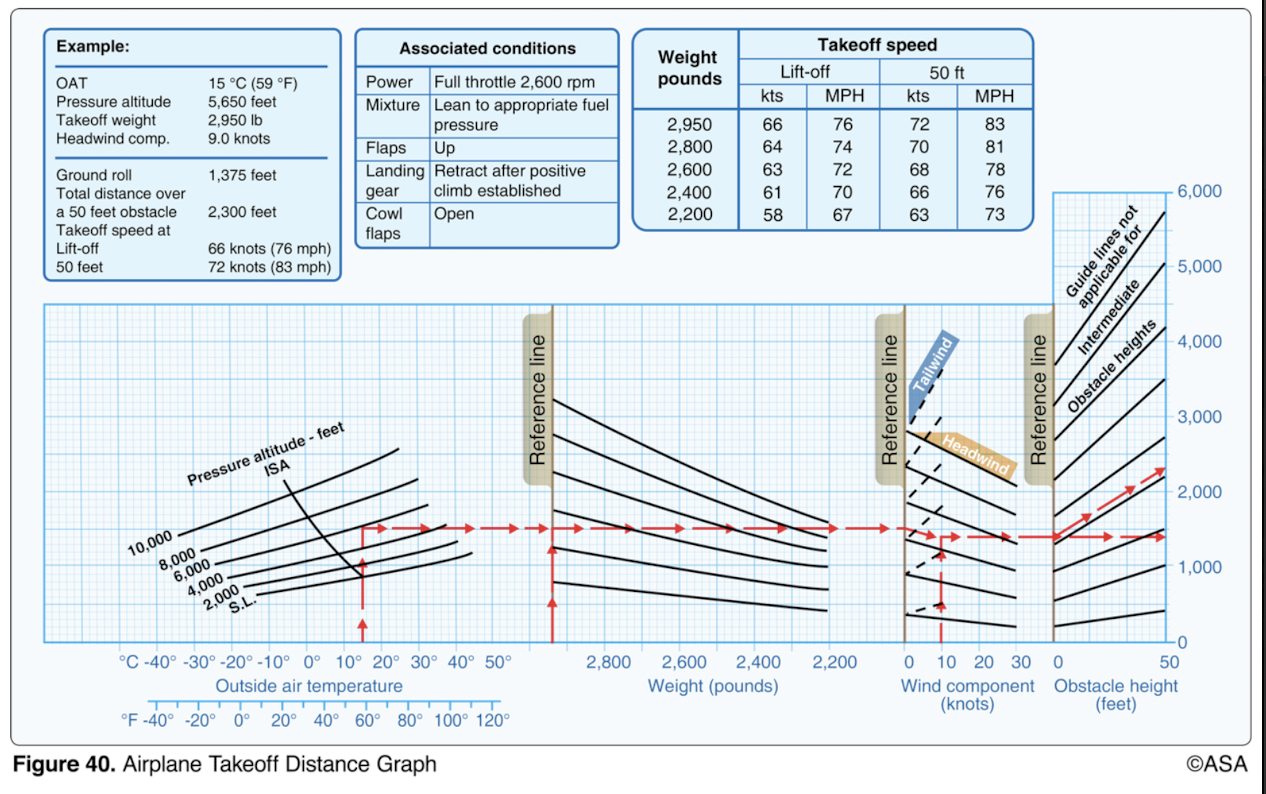
(Refer to Figure 40.) Determine the total distance required for takeoff to clear a 50-foot obstacle.
OAT Std
Pressure altitude Sea level
Takeoff weight 2,700 lb
Headwind component Calm
1,400 feet
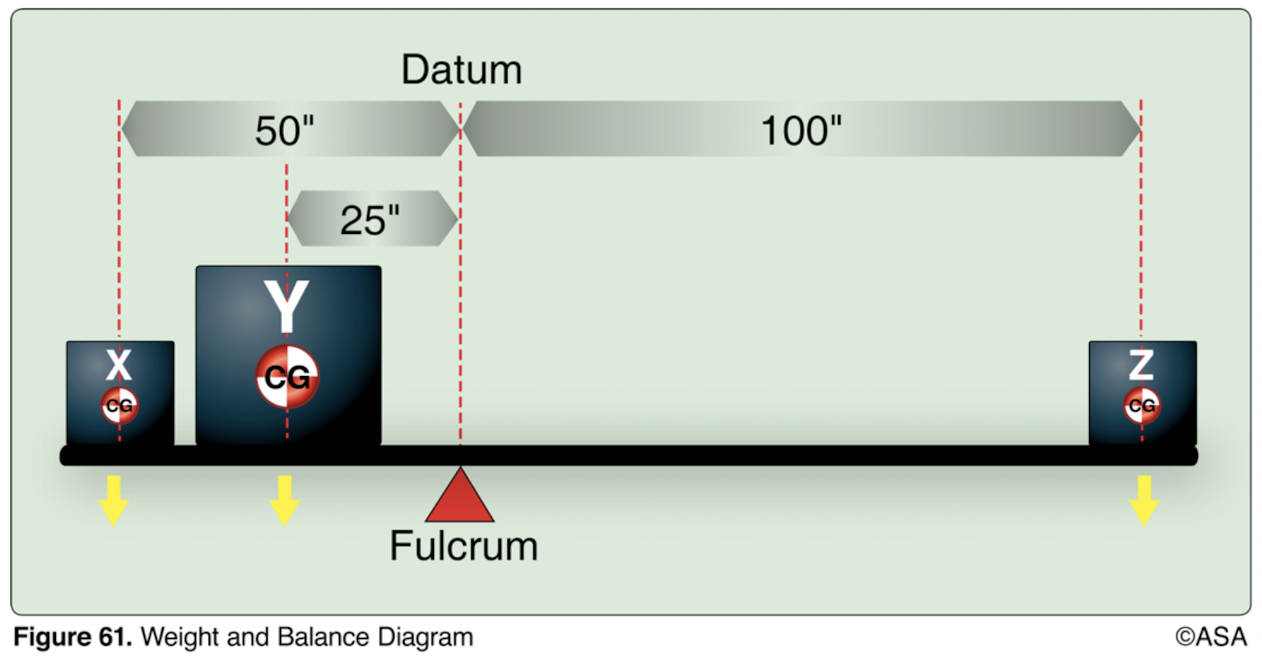
(Refer to figure 61.) If 50 pounds of weight is located at point X and 100 pounds at point Z, how much weight must be located at point Y to balance the plank?
300 pounds
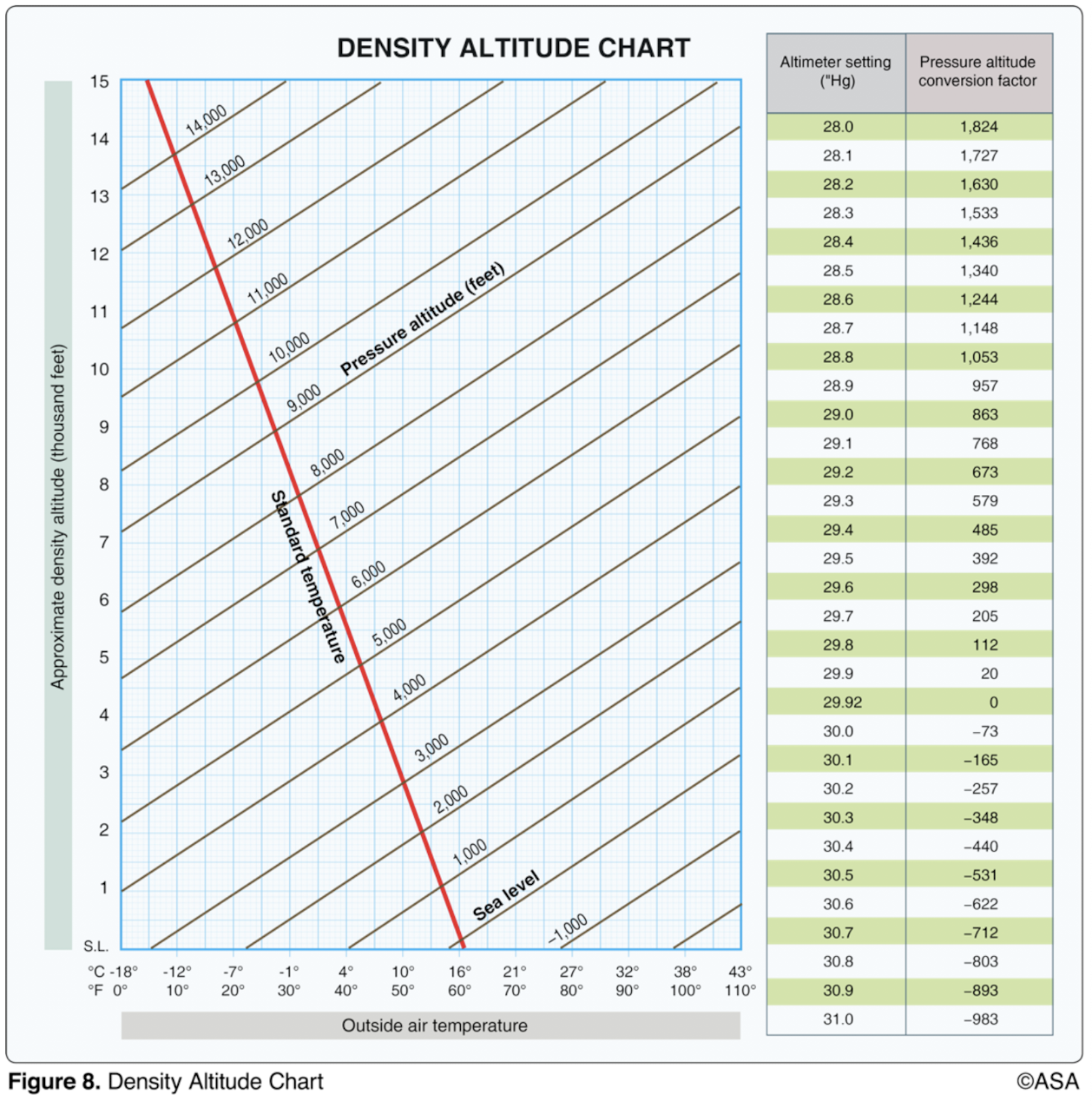
(Refer to Figure 8.) What is the effect of a temperature increase from 35 to 50°F on the density altitude if the pressure altitude remains at 3,000 feet MSL?
1,000-foot increase
Wingtip vortices are created only when an aircraft is
developing lift
(Refer to Figures 32 and 33.) Upon landing, the front passenger (180 pounds) departs the airplane. A rear passenger (204 pounds) moves to the front passenger position. What effect does this have on the CG if the airplane weighed 2,690 pounds and the MOM/100 was 2,260 just prior to the passenger transfer?
The CG moves forward approximately 3 inches
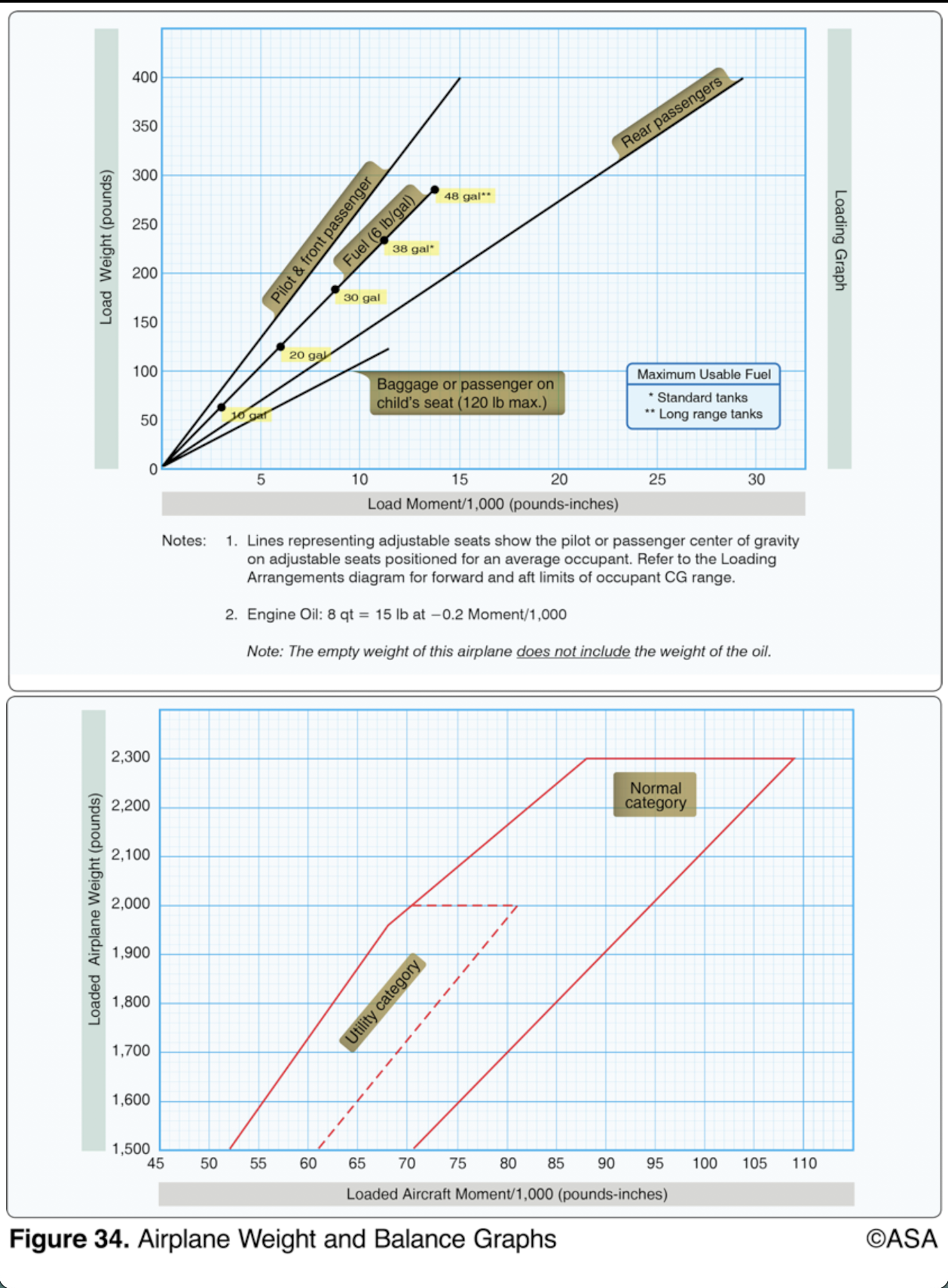
(Refer to Figure 34.) What is the maximum amount of baggage that may be loaded aboard the airplane for the CG to remain within the moment envelope?
WEIGHT (LB) MOM/1000
Empty weight 1,350 51.5
Pilot and front passenger 250 --
Rear passengers 400 --
Baggage -- --
Fuel, 30 gal -- --
Oil, 8 qt -- -0.2
105 pounds
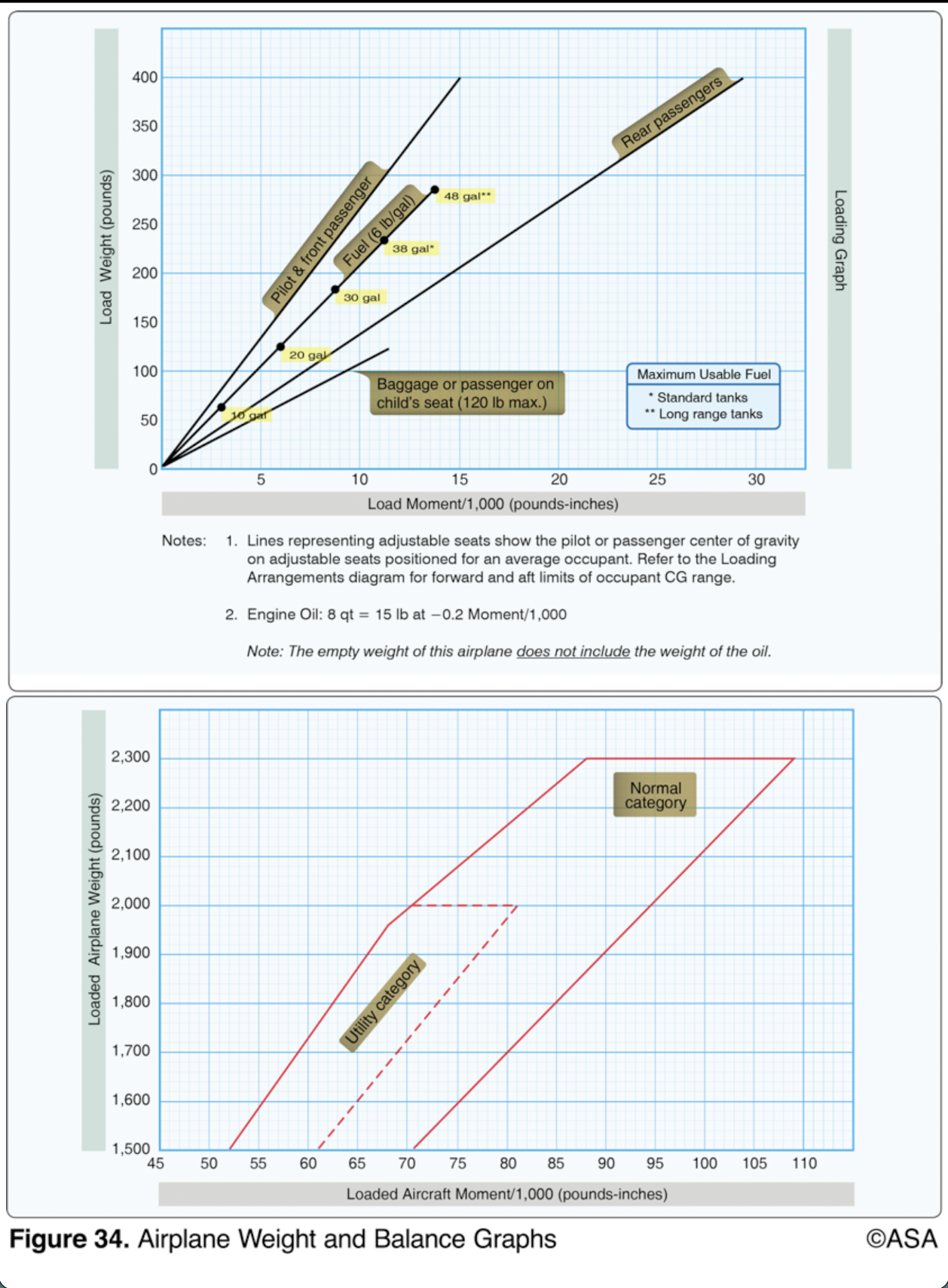
(Refer to Figure 34.) Determine the aircraft loaded moment and the aircraft category.
WEIGHT (LB) MOM/1000
Empty weight 1,350 51.5
Pilot and front passenger 380 --
Fuel, 48 gal 288 --
Oil, 8 qt -- --
79.2, normal category
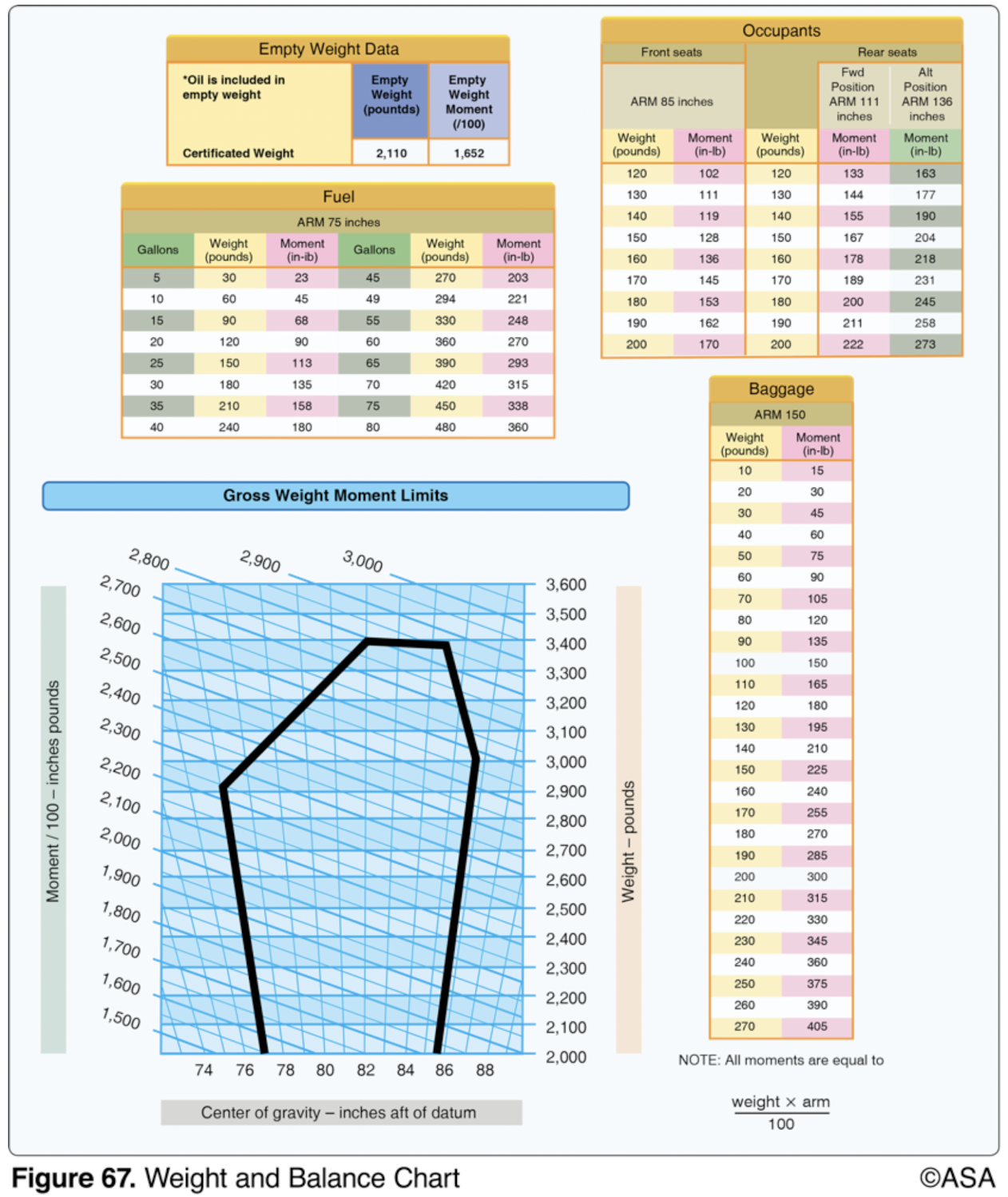
(Refer to Figure 67.) What effect does a 30-gallon fuel burn have on the weight and balance if the airplane weighed 2,784 pounds and the MOM/100 was 2,222 at takeoff?
Moment will decrease to 2,087 lbs-in
Which factor would tend to increase the density altitude at a given airport?
An increase in ambient temperature
If the outside air temperature (OAT) at a given altitude is warmer than standard, the density altitude is
higher than pressure altitude
Floating caused by the phenomenon of ground effect will be most realized during an approach to land when at
less than the length of the wingspan above the surface
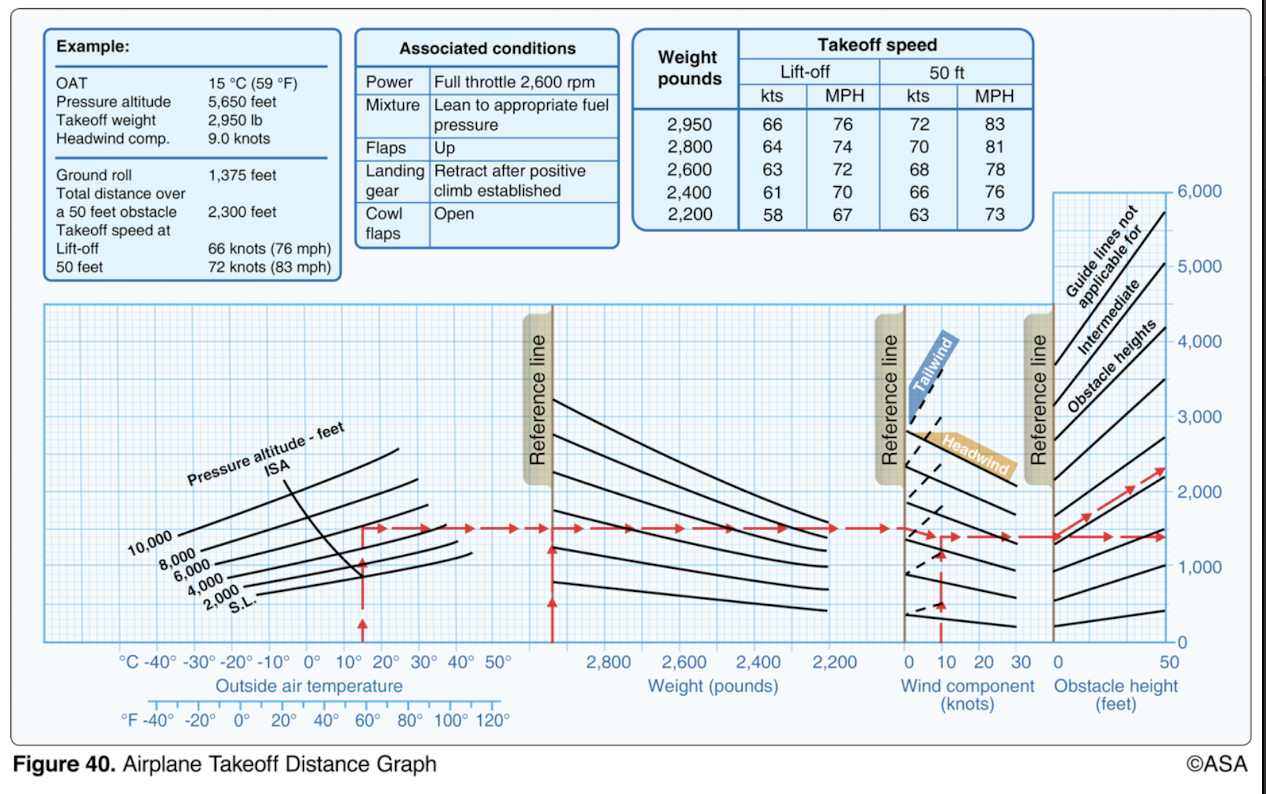
(Refer to Figure 40.) Determine the total distance required for takeoff to clear a 50-foot obstacle.
OAT Std
Pressure altitude 4,000 ft
Takeoff weight 2,800 lb
Headwind component Calm
1,750 feet
(Refer to Figures 32 and 33.) With the airplane loaded as follows, what action can be taken to balance the airplane?
Front seat occupants 411 lb
Rear seat occupants 100 lb
Main wing tanks 44 gal
Add a 100-pound weight to the baggage compartment
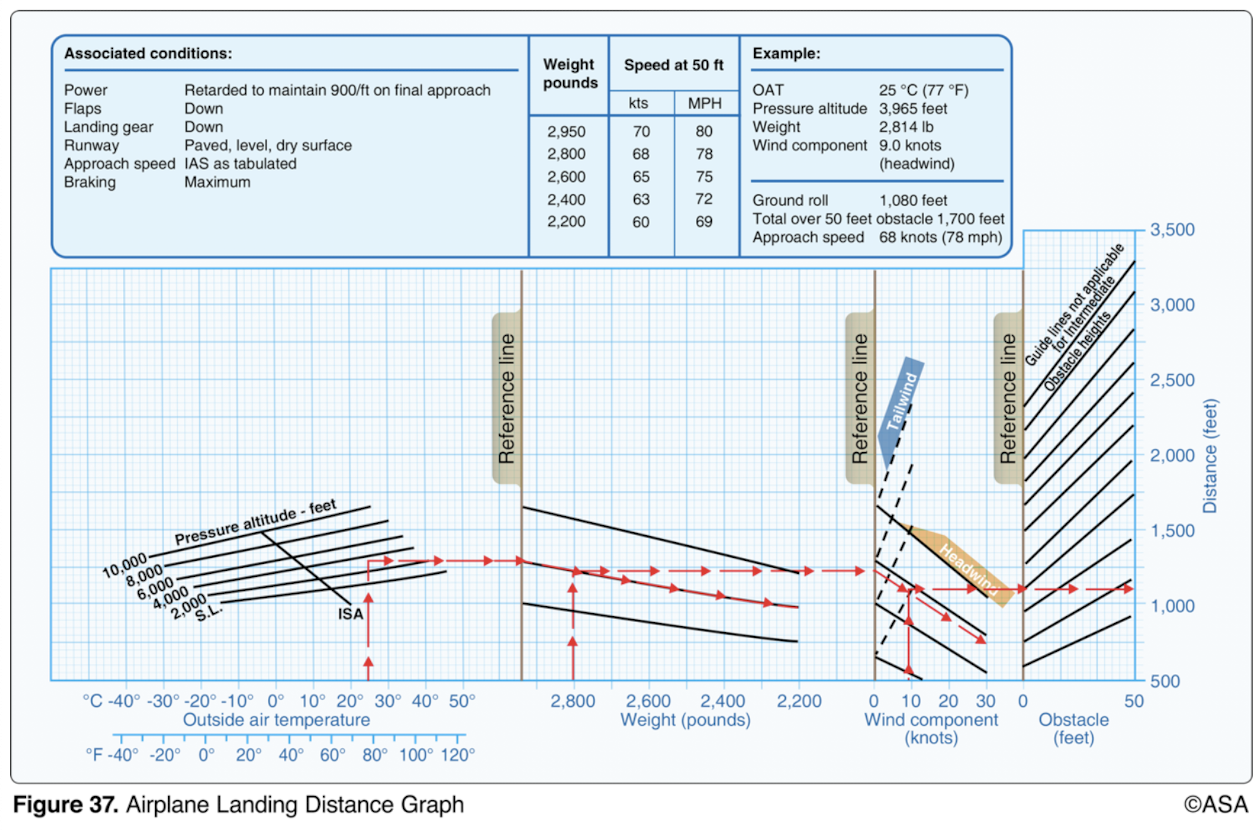
(Refer to Figure 37.) Determine the approximate total distance required to land over a 50-foot obstacle.
OAT 90°F
Pressure altitude 4,000 ft
Weight 2,800 lb
Headwind component 10 kts
1,775 feet

(Refer to Figure 38.) Determine the total distance required to land over a 50-foot obstacle.
Pressure altitude 7,500 ft
Headwind 8 kts
Temperature 32°F
Runway Hard surface
1,004 feet
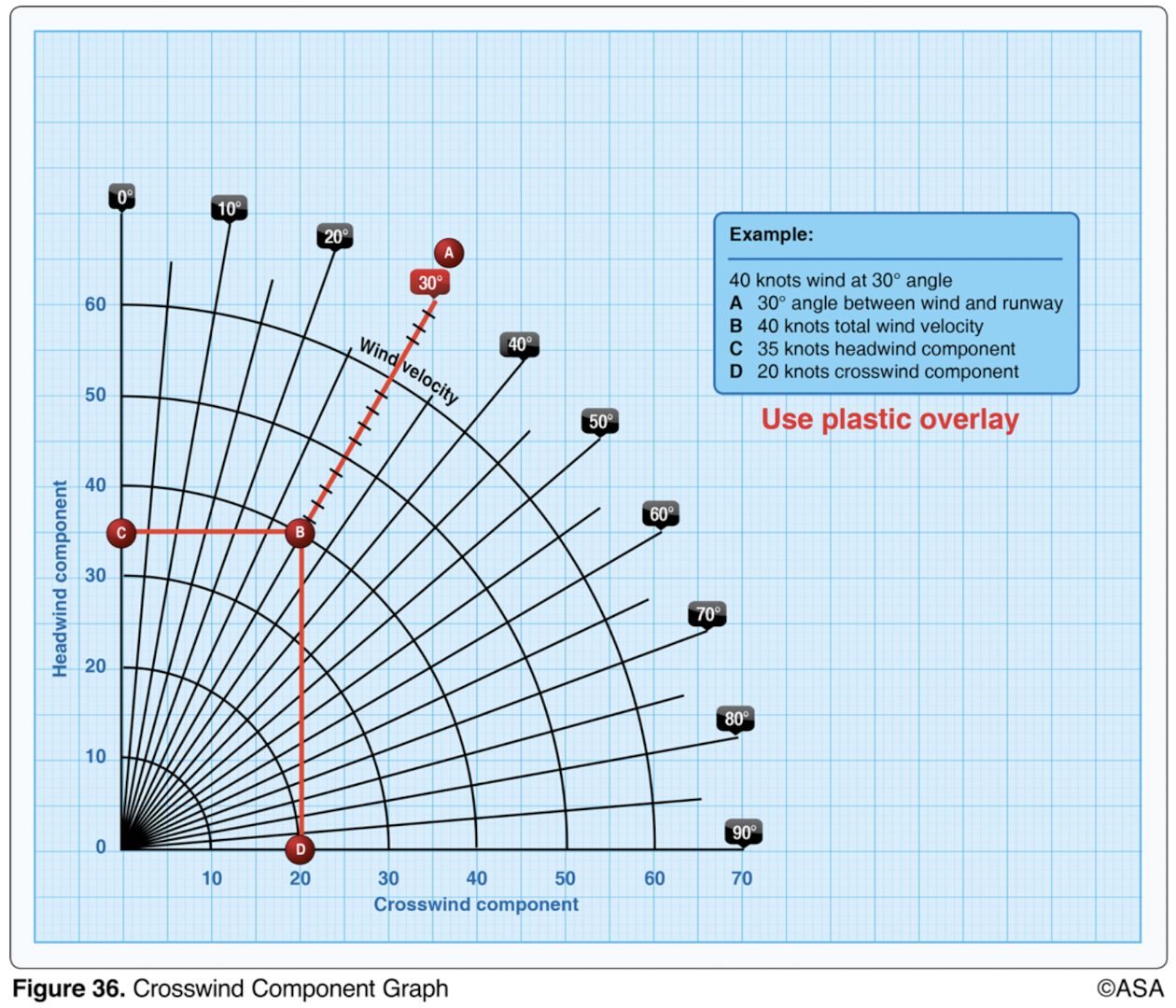
(Refer to Figure 36.) What is the maximum wind velocity for a 30° crosswind if the maximum crosswind component for the airplane is 12 knots?
24 knots
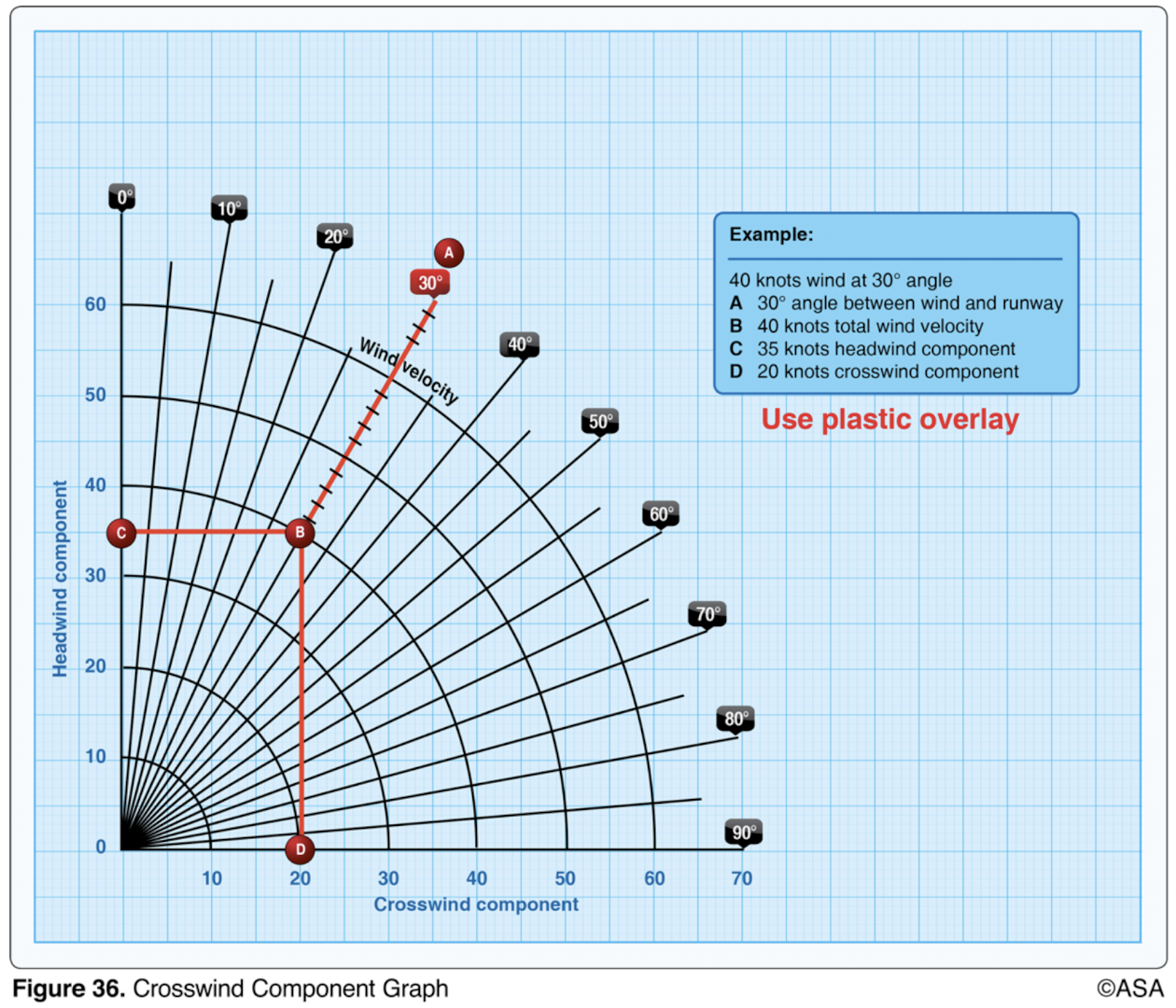
(Refer to Figure 36.) What is the headwind component for a landing on Runway 18 if the tower reports the wind as 220° at 30 knots?
23 knots
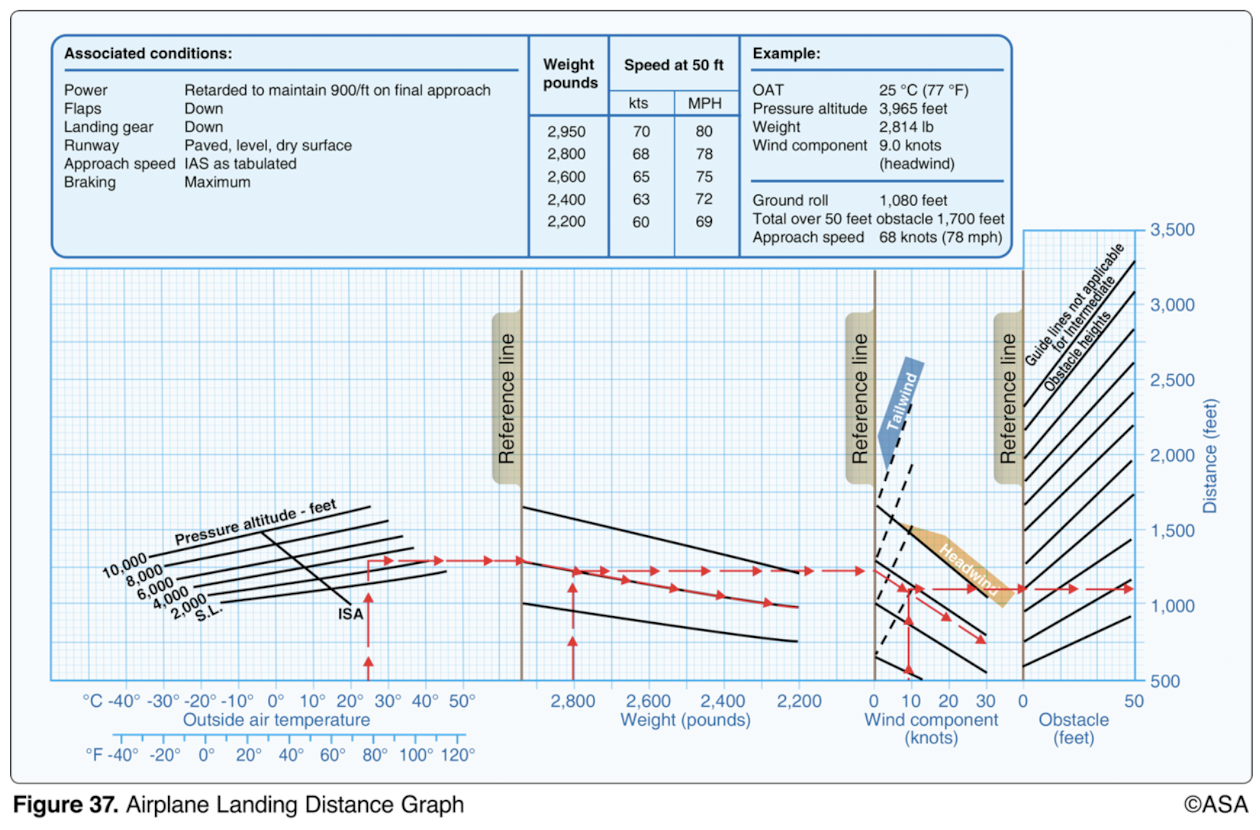
(Refer to Figure 37.) Determine the total distance required to land.
OAT 32°F
Pressure altitude 8,000 ft
Weight 2,600 lb
Headwind component 20 kts
Obstacle 50 ft
1,400 feet
(Refer to Figures 32 and 33.) Determine if the airplane weight and balance is within limits.
Front seat occupants 415 lb
Rear seat occupants 110 lb
Fuel, main tanks 44 gal
Fuel, aux. tanks 19 gal
Baggage 32 lb
Weight within limits, CG out of limits
What are the standard temperature and pressure values for sea level?
15°C and 29.92 ‘Hg

(Refer to Figure 38.) Determine the approximate landing ground roll distance.
Pressure altitude Sea level
Headwind 4 kts
Temperature Std
401 feet
(Refer to Figures 32 and 33.) What effect does a 35-gallon fuel burn (main tanks) have on the weight and balance if the airplane weighed 2,890 pounds and the MOM/100 was 2,452 at takeoff?
Weight is reduced by 210 pounds and the CG is aft of limits
What effect does high density altitude have on aircraft performance?
It reduces climb performance
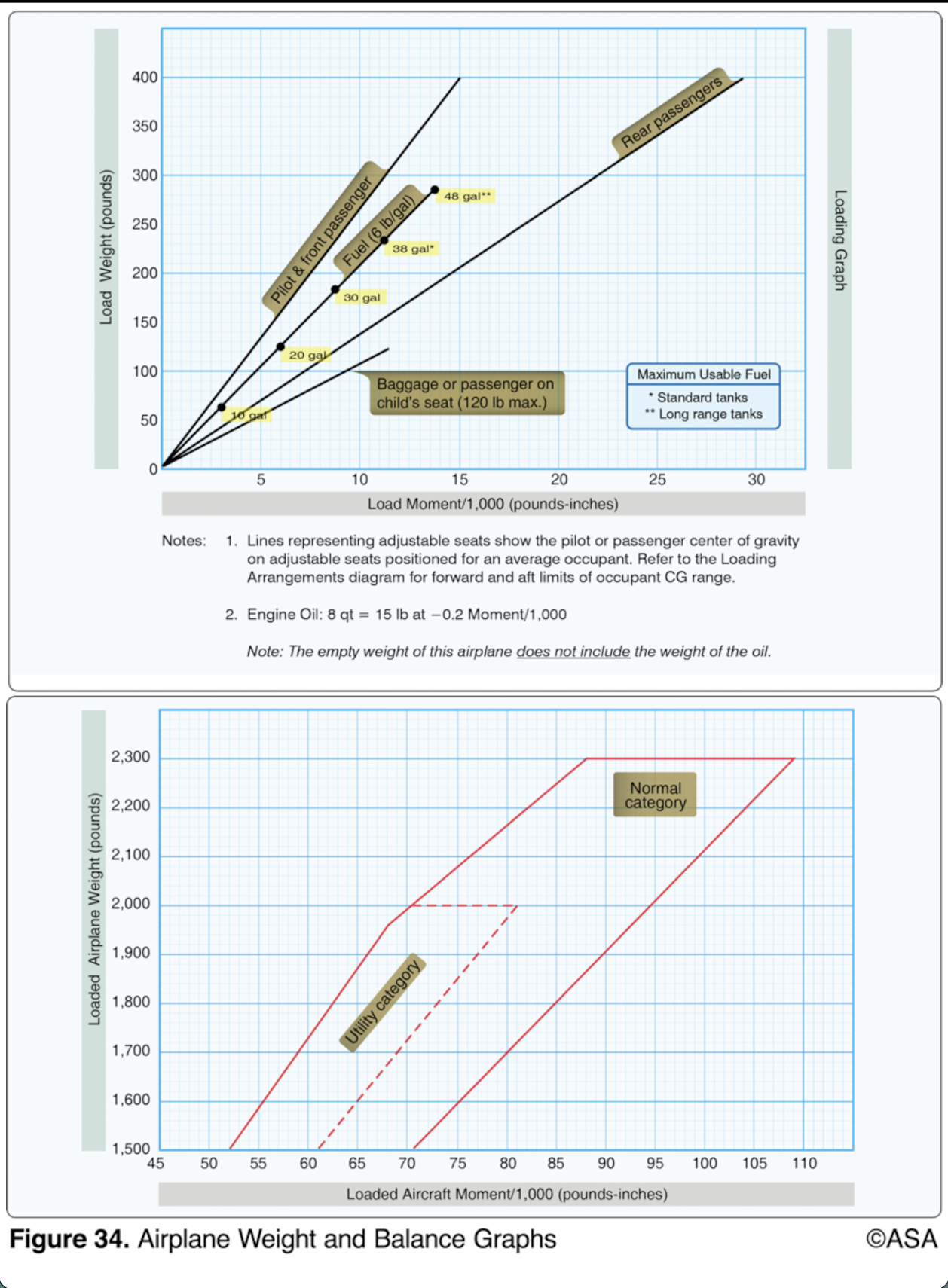
(Refer to Figure 34.) Calculate the moment of the airplane and determine which category is applicable.
WEIGHT (LB) MOM/1000
Empty weight 1,350 51.5
Pilot and front passenger 310 --
Rear passengers 96 --
Fuel, 38 gal -- --
Oil, 8 qt -- -0.2
80.8, utility category
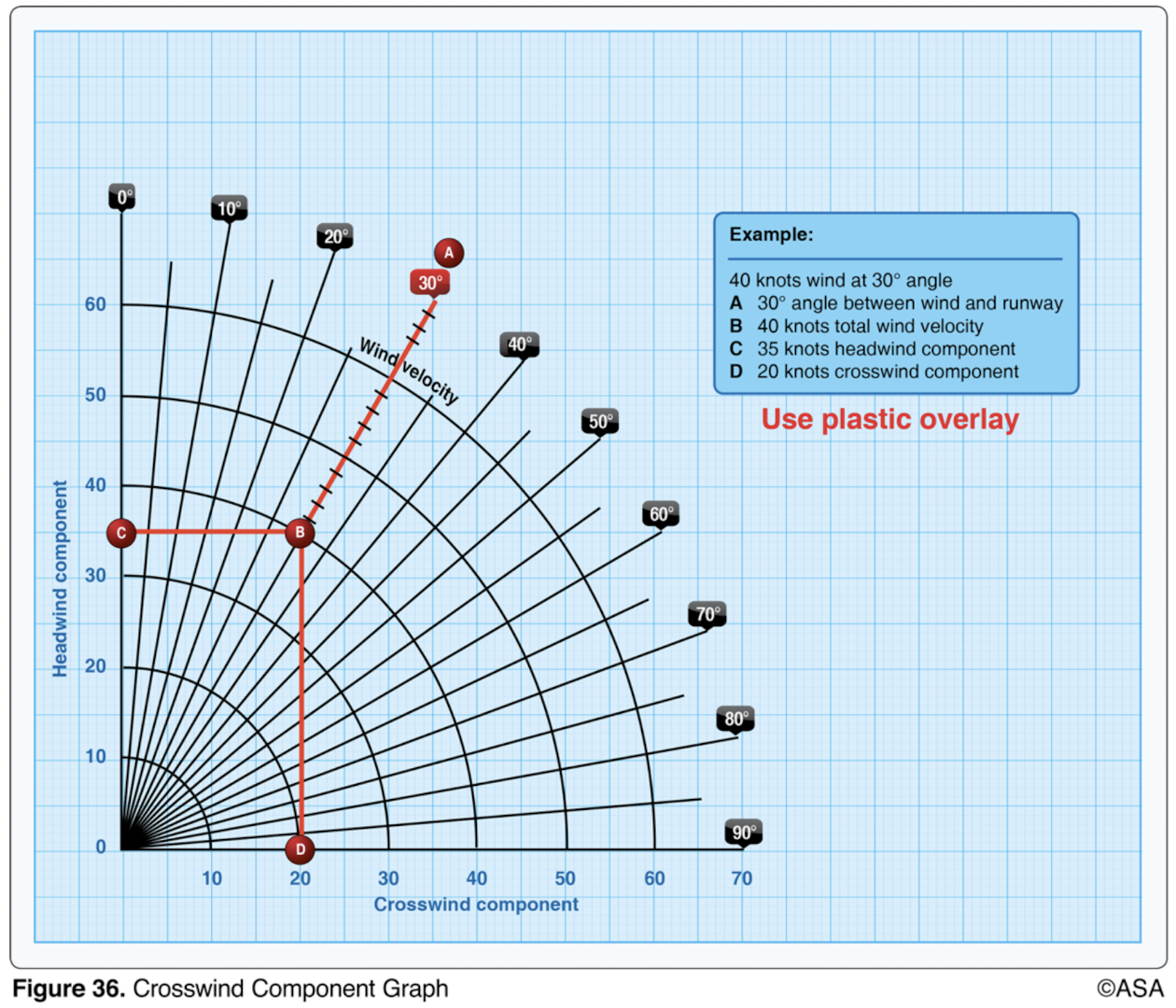
(Refer to Figure 36.) Determine the maximum wind velocity for a 45° crosswind if the maximum crosswind component for the airplane is 25 knots.
35 knots
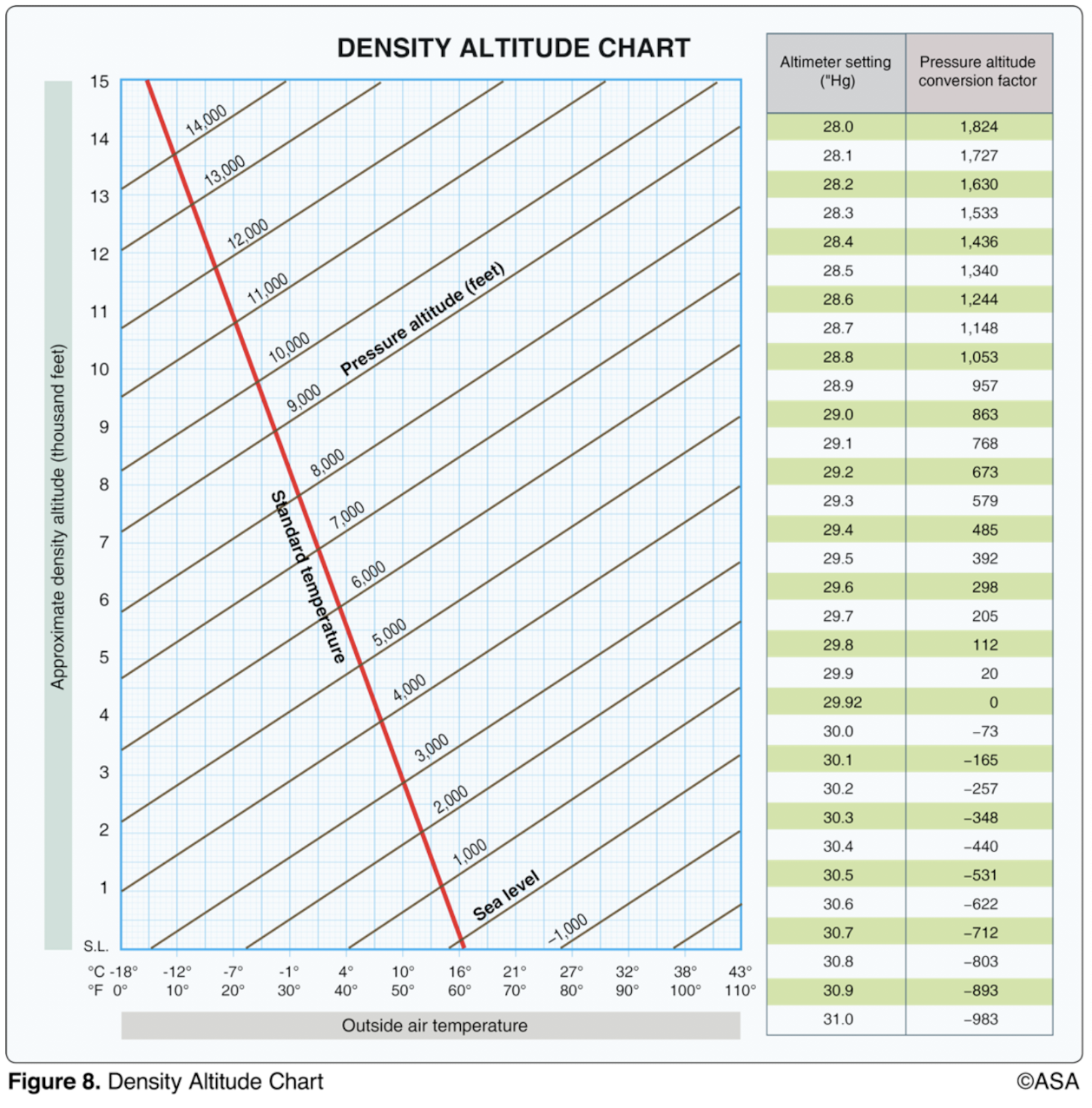
(Refer to Figure 8.) Determine the density altitude for these conditions:
Altimeter setting 30.35
Runway temperature +25°F
Airport elevation 3,894 ft MSL
2,800 feet MSL